I was inspired by Darcy’s foam Squirrels to try a couple of my own. It would be easy to copy the shapes of the original Squirrel, but foam frees us to use shapes that are not dictated by the structural requirements of balsa stick construction. One has trapezoidal tips and the other has elliptical tips. Foam is soft and fragile. It requires careful handling, but so do balsa structures. Foam will tear if cut with a dull knife, so use a new, sharp blade. An advantage of foam is that it is not sensitive to humidity, so wet lawns will not make it sag and dry days will not make it warp. The foam Squirrels are a bit heavier than the balsa and tissue Squirrels, but still light enough to fly very well.
I used cambered wings for aerodynamic efficiency, made with creases like the Klutz planes. The camber also provides stiffness, eliminating the need for sticks in the wings. I used a 6″ MPC propeller assembly, as in the Squirrel kit. With 4.1 degrees downthrust on the prop hanger and 3.6 degrees to the wing zero lift line, the attack angle in flight will be 7.7 degrees, right where I want it without requiring a shim under the wing. The 1/8″ x 1/4″ x 12″ balsa stick has a 1/8″ square shim block glued to the front end for a tight fit of the prop hanger. The back end is tapered 1/8″ in 2 1/4″ for the tailplane, 3.1 degrees. I bent a motor hook from a pin. The wing mounts to the central hold down stick over a couple 1/16″ ribs or a single 1/8″ rib. It is held down with doubled over dental elastics. I used 1 mm Depron from www.rcfoam.com and Aleene’s Original Tacky Glue.
I made pictures of my build, so you can see how to build some of your own. Start by printing the patterns and making cardboard templates.
Copy and print this picture so the 6″ lengths are 6″ long. Note that the 3/16″ highest point of the camber on the base of the fin is toward the front. You can turn them around for variety, if you like, as long as you keep the high point toward the front.
Tape a piece of cardboard to your work surface.
Tape the paper pattern over the cardboard.
Poke pinholes through the pattern into the cardboard every quarter inch around the perimeter. Also poke a hole about an eighth of an inch in from each end of the centerline.
Remove the paper pattern and tape, draw a curve through the pinholes if you like, and cut out the template. Do the same for all the patterns.
The trapezoidal templates are more easily cut out with a straightedge and razor blade.
Push a pin through the pin holes on the centerlines about 1/8″ from each end.
Make a template for each foam part. The wingtip plates and the fins use the same pattern. The wingtip plates are cut along the curve at the bottom. The fins are cut straight across the bottom.
The squirrel wing is a rectangle with 2 1/4″ chord and 12″ span. Since this wing is going to curve between the leading edge and the trailing edge, the foam rectangle must be a bit wider. I made it 2 5/16″ x 12″. Start by cutting one tip and edge using a carpenter’s square as a guide.
Mark the 2 5/16″ length on the wingtip.
Put marks at 6″ and 12″ along the long edge.
Turn the square around, align the 12″ length on the long edge and the 2 5/16 length on the short edge and cut out with the razor blade.
Cut out the tailplane.
Poke a pin through the holes to mark the centerline.
Cut out the fin. Cut it so the curve of the foam will have the convex side on the right. This will help the plane circle left. (If you get it wrong, you can turn it around, it will work fine backwards.)
It is easier to cut the curves with a sharp pointed knife. The curve on the wingtips should be convex inwards. Flip the template over to make a right and left. (If you get them wrong, switch them.) The wingtips are cut along the curve at the bottom so they can fit on top of the curved wing.
Continue until you have cut out all the foam parts. Each plane needs a wing, two wingtips, a tailplane and a fin. I am making two kinds of foam Squirrel, so I made two sets of parts.
Cut out a strip of cardboard and mark off six 7/16″ intervals along one edge. We will use this ruler to mark off the crease locations on the wingtips.
Pick one long edge of the wing to be the leading edge. Transfer the six marks to the underside of the wing tip, on the inside of the curve, starting at the leading edge.
Transfer the six marks to the opposite wingtip, also on the inside of the curve and starting from the same leading edge. Also put marks on the top, or convex side of the wing, 1/16″ on either side of the centers of both the leading and trailing edges, to mark the location of the center rib. The pencil does not make a clear mark, but it makes a slight crease in the surface.
There are several ways to make the creases that form the cambered airfoil of the wing. You can bend them over a block of wood, steel rule or carpenters square. Here is a way to use a block of wood. Align the edge of a block of wood with the first two marks.
Put the foam against the table and rotate the block upwards to crease the foam. I find this is easiest if putting the crease about an inch away from the edge of the table so I can grip the board and the foam to rotate it upwards. Then press a second block against the first to make a uniform, sharp crease.
Make creases between all six pairs of marks.
Shape the curve with your fingers until it fits the curve along the bottom of the wing tip.
Put a 1 mm bead of glue along the top of one wing end.
Match the parts and move them back and forth slightly to spread glue uniformly around.
Hold the tip flat to the board that has been protected from glue with plastic sheet.
Press the wing against the tip, using a bottle cap at the high point of the curve. Get the wing uniformly in contact with the tip, firmly seated on the surface of the board and perpendicular to it.
Place a weight on the tip to hold it in place. Pin the bottle cap and the trailing edge in place, checking to insure that the wing is perpendicular to the tip and they are in firm contact. Leave it while the glue sets.
Align the bottom edge of the tip template with the edge of a 1/16″ or 1/8″ sheet of soft balsa.
Cut out two 1/16″ ribs, or one 1/8″ rib.
If you made two 1/16″ ribs, spread glue on one face of one rib.
Press the ribs together.
Cut the 3″ wing hold down stick from 1/16″ x 1/8″ medium-hard balsa.
Sand the ends of the hold down stick to about a 35 degree bevel on the top. Sand until the end face of the stick almost disappears.
Spread glue along the flat underside of the wing rib.
Carefully center the rib front to back and side to side on the hold down stick and press it in place. Note that the bevels and the rib are both on the top side of the stick. This is a good time to check whether the glue is dry on the first wingtip. If it is, you can unpin it and glue on the opposite wingtip.
While waiting for the glue to set, we can cut the 1/2″ long nose block for the propeller bearing box from some 1/8″ square medium-hard balsa.. I cut the back end at a 45 degree angle.
Also cut a 12″ length of 1/8″ x 1/4″ medium-light balsa. Balance the stick to find the heavy end. Glue the nose block to the heavy end with the 45 degree cut to the back. Center it carefully.
When the glue has dried on the wingtips and hold down stick assembly, apply glue to the top of the rib.
Spread the glue uniformly over the top of the rib.
Align and press the rib in place under the wing. The wing hold down stick must be perfectly perpendicular to the wing edges.
Place weights to hold the wing down on the rib until the glue dries.
Mark 2 1/4″ in from the back end of the stick, on the underside, the same side on which the nose block was glued.
Mark 1/8″ up from the bottom of the stick. That is half way across the 1/4″ depth of the stick.
Cut the taper off. Do not cut into the part, leave a little extra. Final shaping will be done with sandpaper.
Place a board on the table top, place the stick on top of the board, back it with another block, hold the sanding block perpendicular to the table top and sand the taper to the marks.
Press the taper to the tabletop and check that the stick is perpendicular to the table top.
Apply glue to the taper.
Spread it uniformly.
Attach the tailplane, aligning the centering pinholes with the center of the stick. I put the convex side up and the tailplanes did not stay stuck. I recommend making marks on the convex, top surface 1/16″ on either side of the centering pinholes.
With marks 1/16″ on either side of the centerline, it was possible to put the tailplane flat on the table, align the stick and weight it down until the glue set.
When the glue on the tailplane has set, apply a bead of glue along the bottom edge of the fin.
Press the fin uniformly to the top of the stick , with the convex side to the right. The leading and trailing edges line up at the left edge of the stick. There is no angle to the fin, the camber will provide enough lift to make the plane turn in a left circle. You can angle it slightly if you want to change the radius of the turning circle.
Check that the fin is perpendicular to the tailplane. Straighten if necessary.
Slip two dental elastics onto the stick and double them up. Slide them onto the stick into position to hold the wing hold down stick, one at the leading edge and one at the trailing edge of the wing.
For each plane, make up a rear motor hook from a sewing pin or piece of 0.020″ steel wire, as shown in the builds for the Denny Dart Mk II H or Klutz Firebird II B, elsewhere on this site.
Press it into place to check fit, then withdraw it. It helps to poke a hole into the wood with a pin first. The hook goes on the under surface of the stick, centered and just behind the start of the taper.
Apply glue to the hook and press it back in place.
Apply glue around the wire everywhere it contacts the wood.
Hold the stick between the thumb and middle finger, hold the wing to the stick with the index finger and roll the elastics over the hold down stick with the other hand.
Turn it around and put the opposite elastic on.
Slide the propeller assembly onto the nose. It should be a tight fit. If not, you can add paper or card shims to make it snug. Note that the propeller hook goes on the bottom, to line up with the rear motor hook at the tail.
Apply a tiny drop of light machine oil to the propeller bearing.
That completes construction of the airplanes. For test flights, I grabbed a handy 10 1/2″ loop of 3/32″ rubber.
I moved the wing until the plane balanced at the high point of the curve, on the fourth crease. I stick pins into the ends of some blocks and balance the plane on the heads of the pins, being sure the propeller and motor do not rest on the tabletop.
Make a pencil mark on the stick so you can reposition the wing if it gets moved. If flight tests indicate the wing needs to be moved, note the relative position and replace the pencil mark accordingly. If you use a motor with a different weight, it may be necessary to relocate the wing and move the mark.
I went to a nearby park with two adjacent soccer fields. I put up to 1,000 turns into the lubed motor, stretch winding with a winder. I got flights of about a minute duration, well over the treetops. Longer flights would be risky in this small park. One of the planes landed high in a tree, requiring a difficult recovery and some minor repairs. See that story in another post on this site. Here is a video of one of the first flights, almost a minute in the air.
Later I returned on a day when there was no wind. I tried an 18″ loop of 1/16″ rubber, lubed and stretch wound to 2,400 turns. This did about a minute, too.
I think longer flights will require an 18″ loop of 3/32″ rubber. But that will require a bigger flying field. I got this one into a tree and did some damage getting it down that required a minor repair.
Follow these instructions and your foam Squirrel will fly as well.
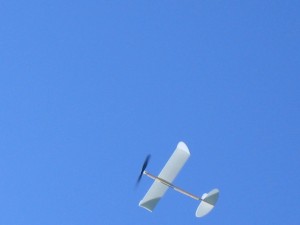
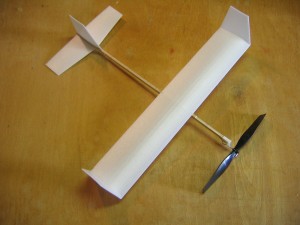
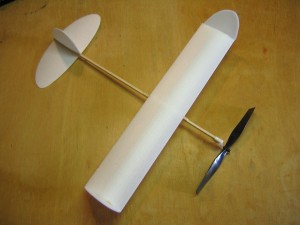
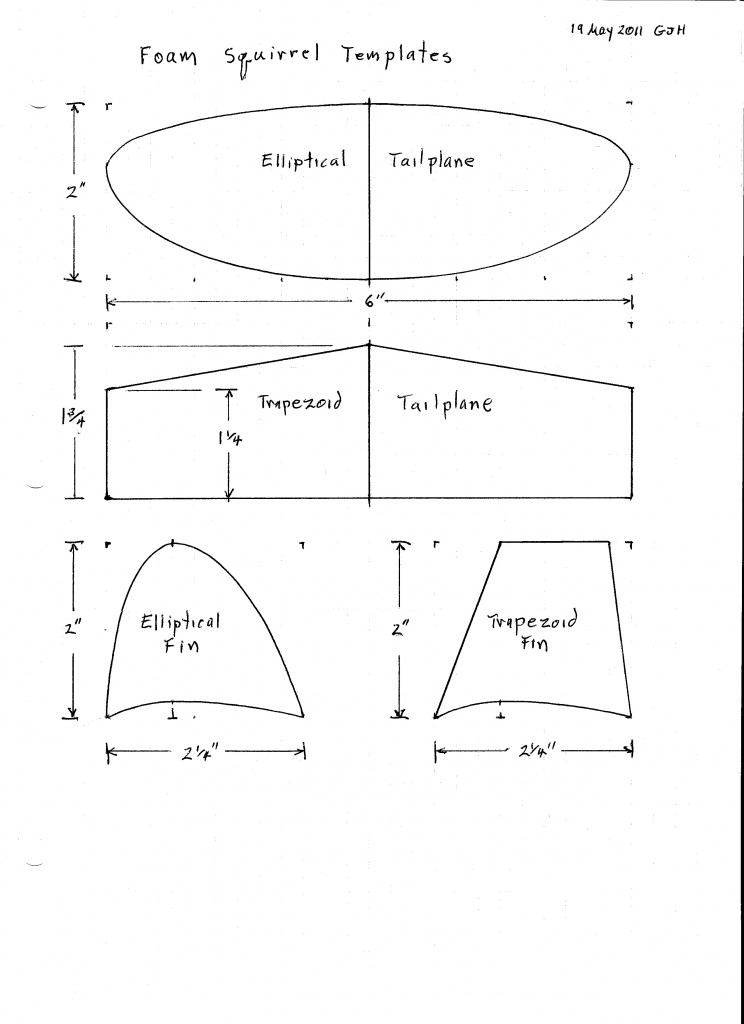
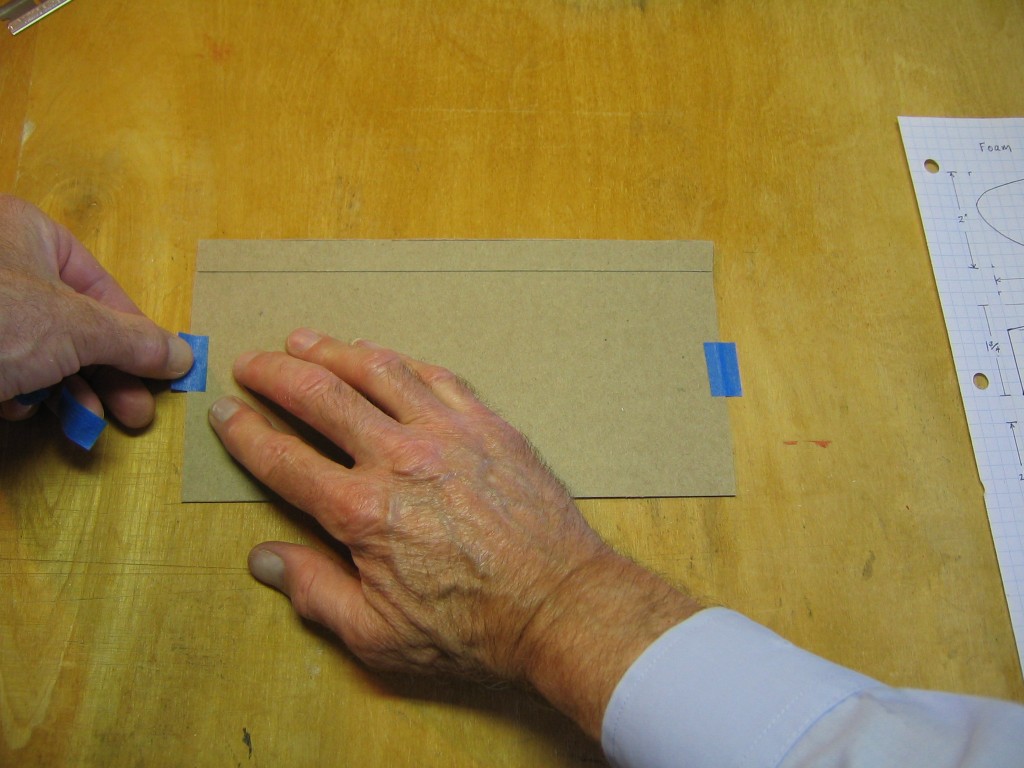
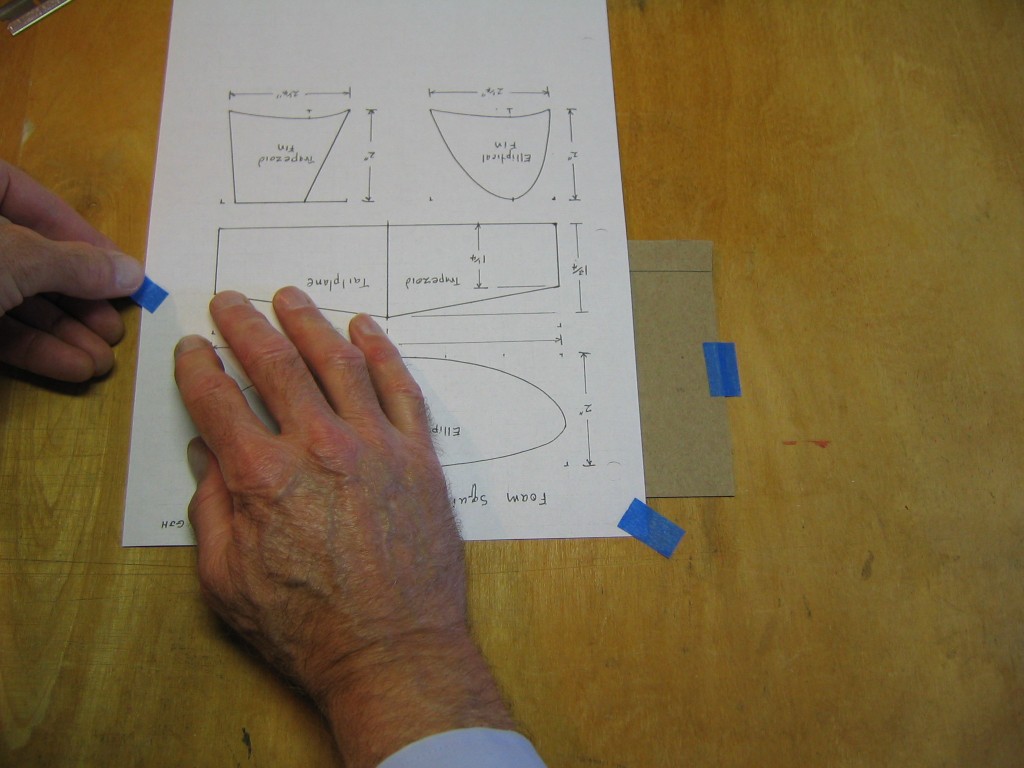
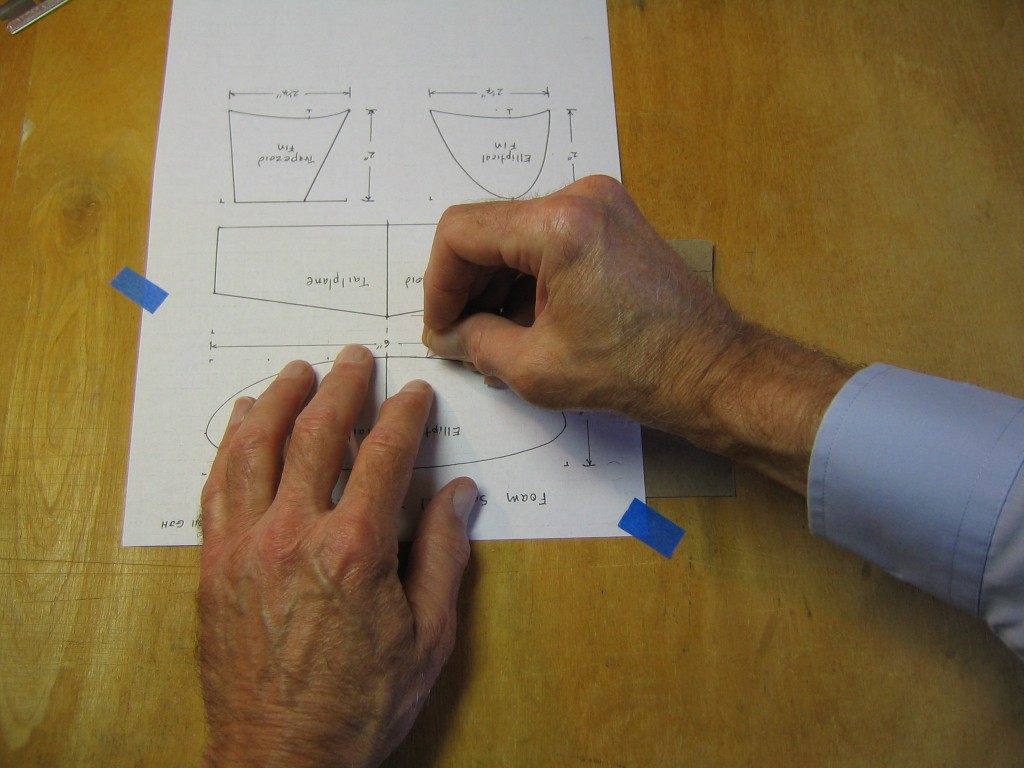
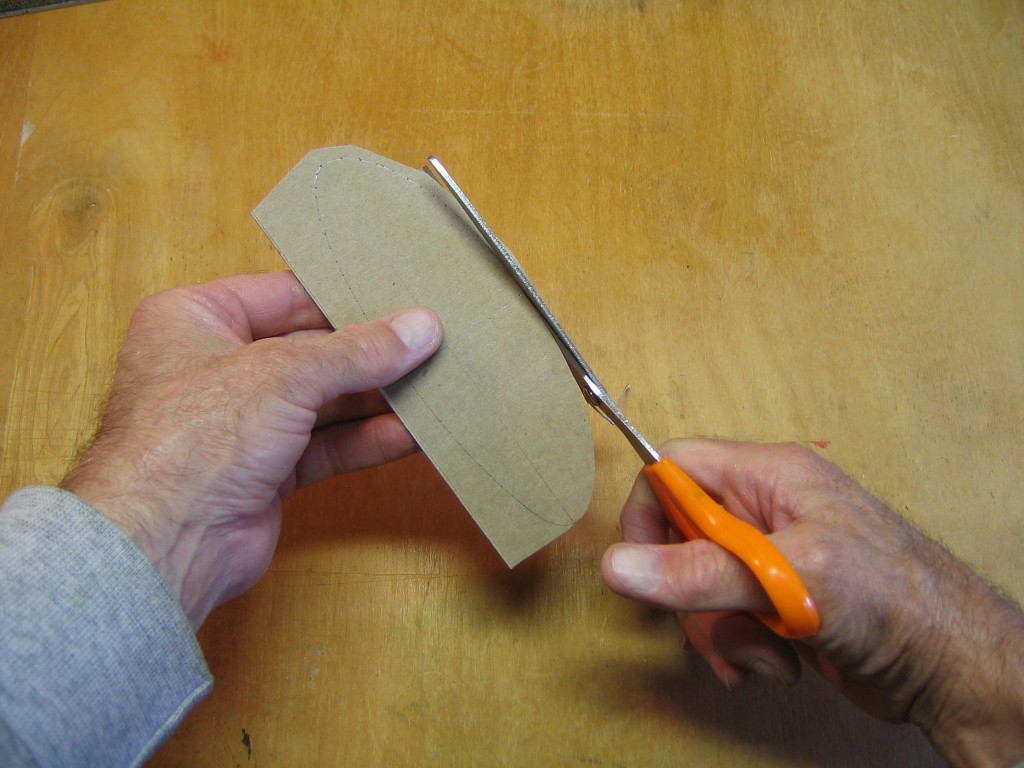
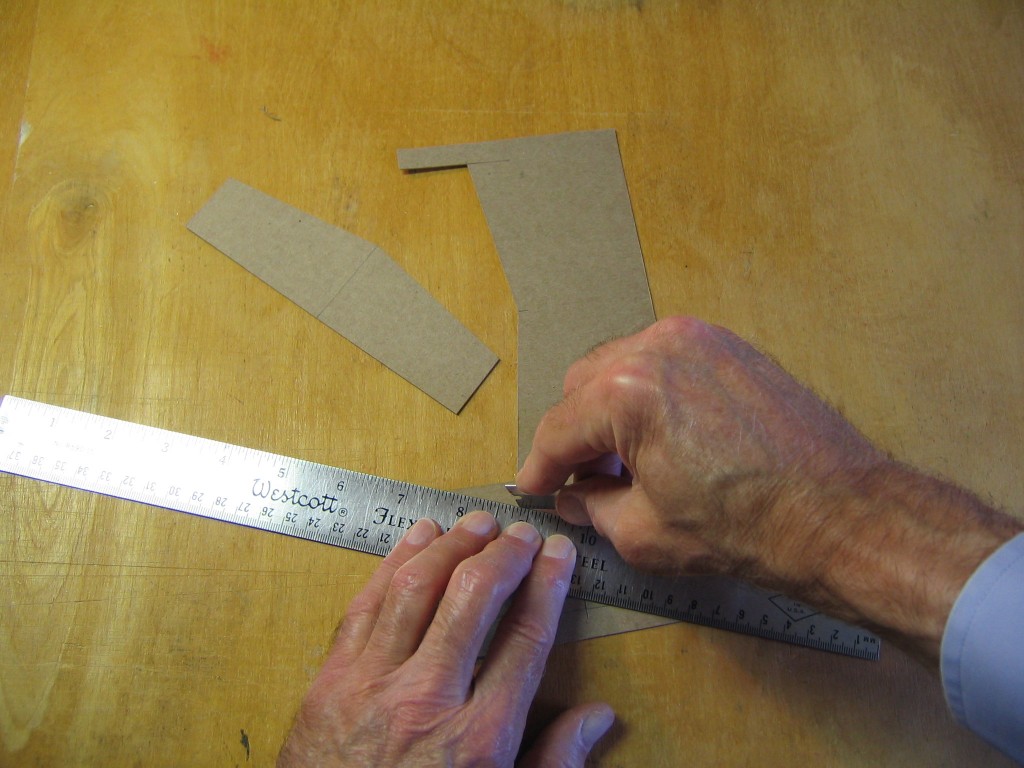
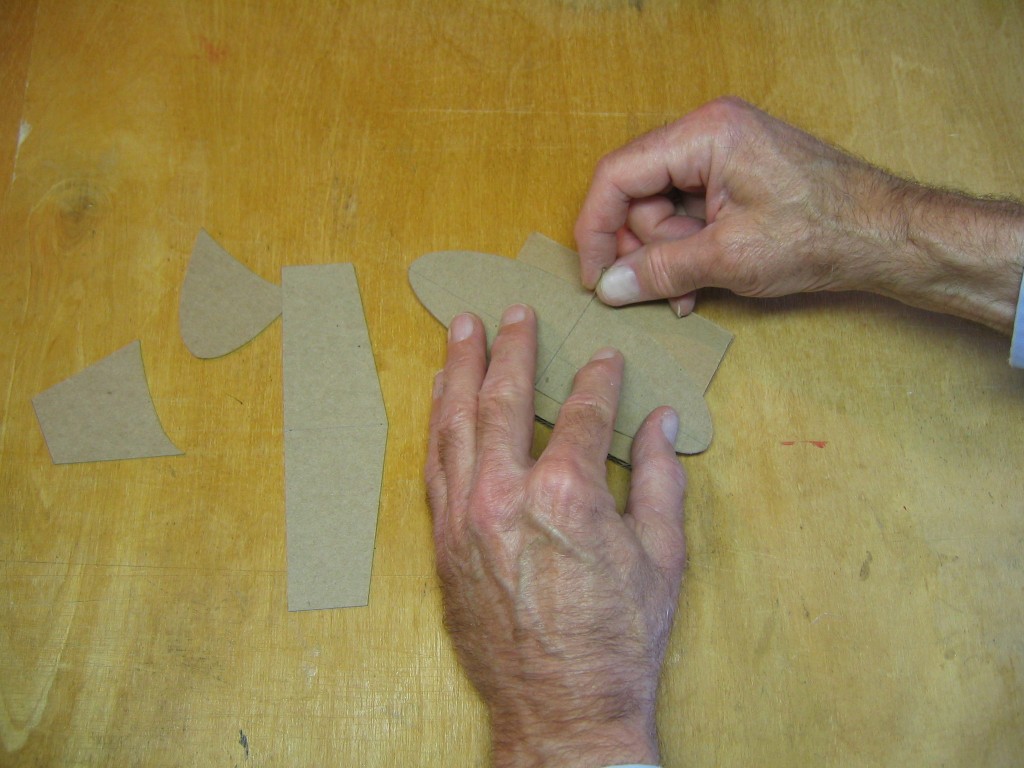
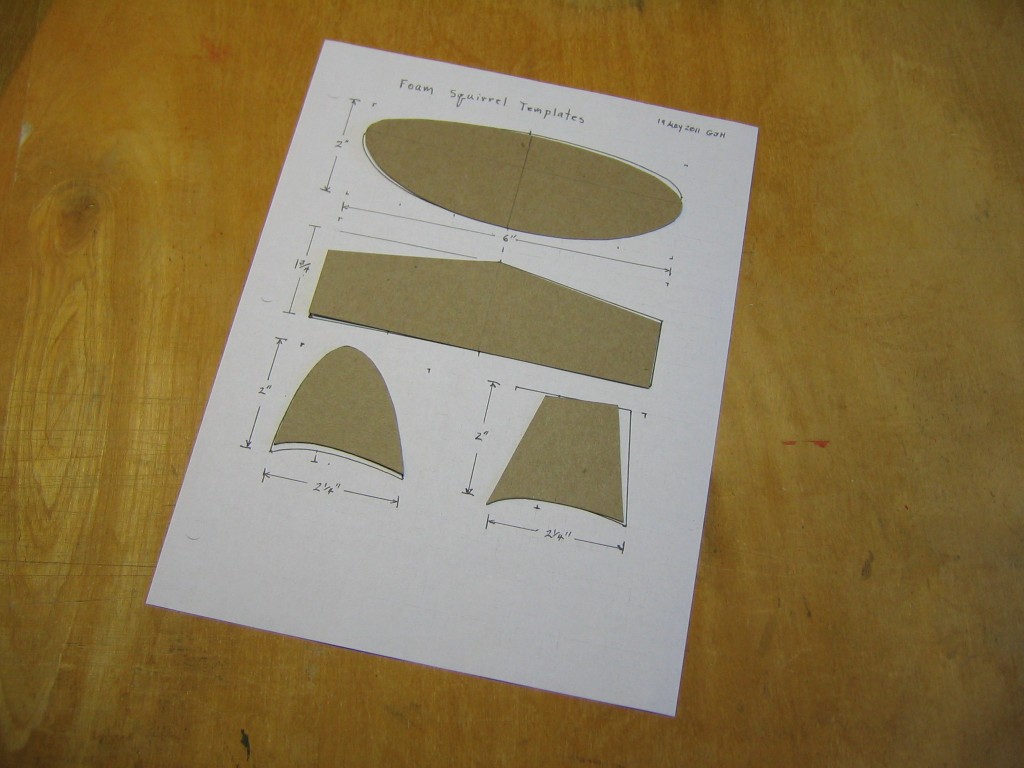
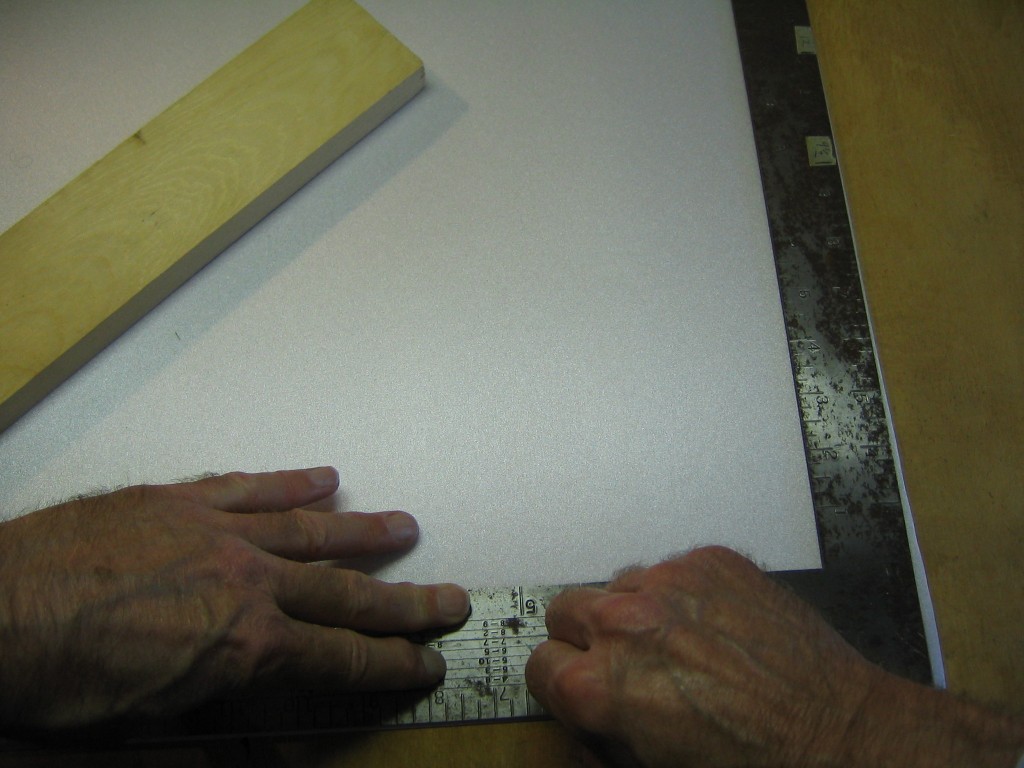
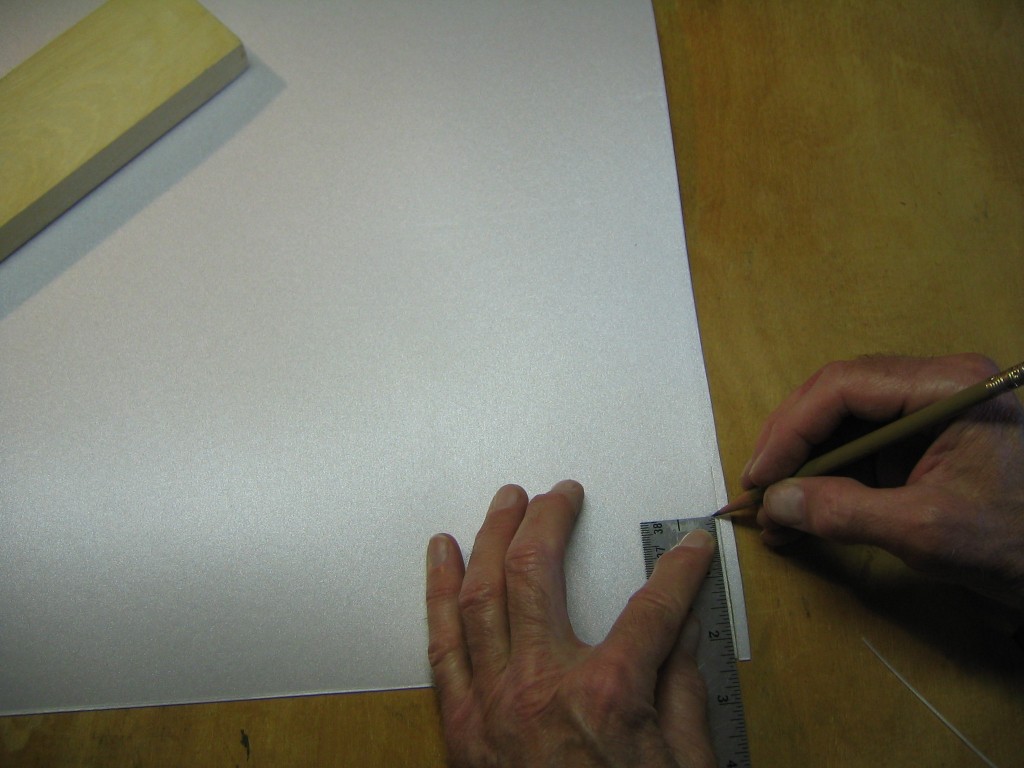
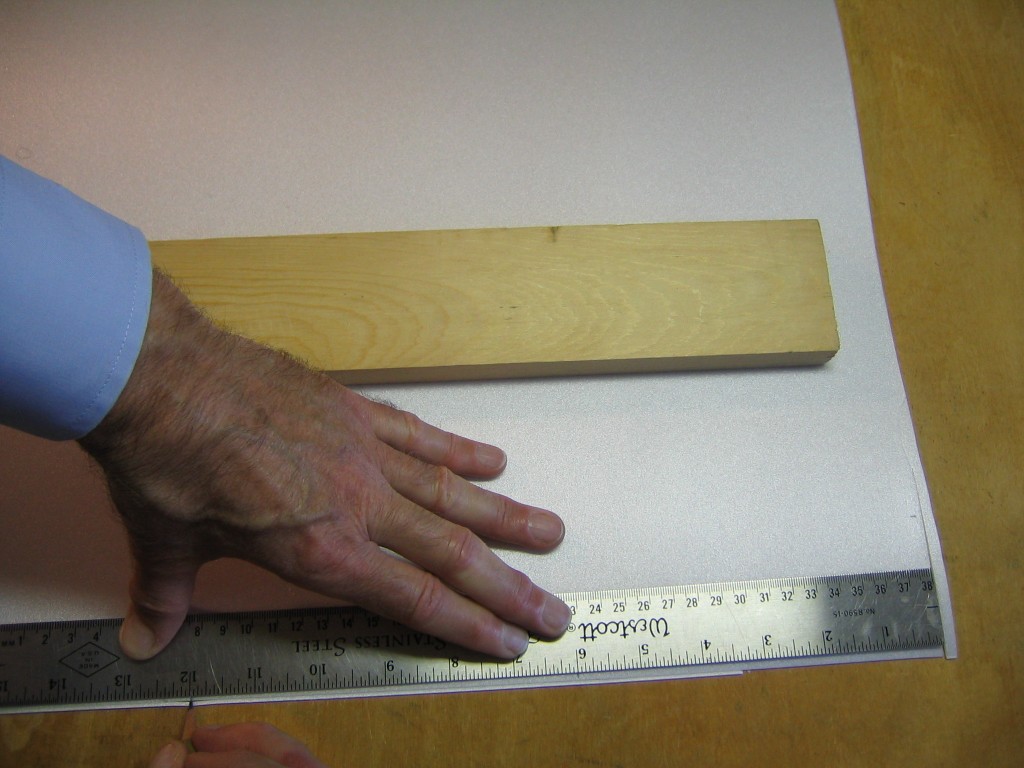
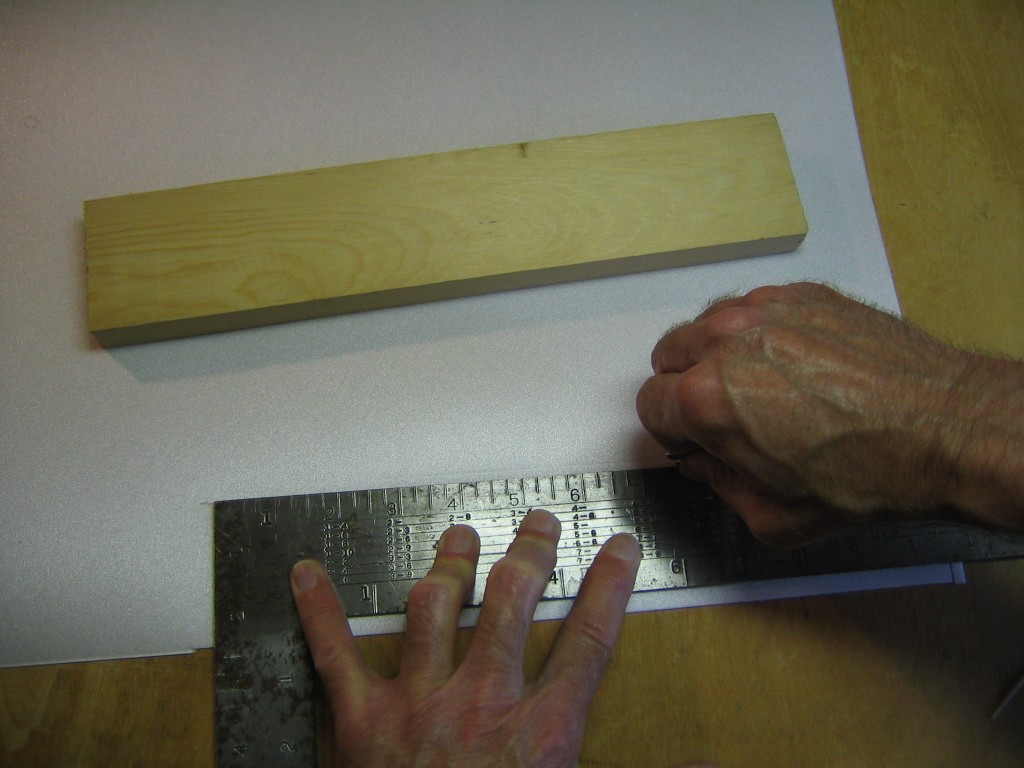
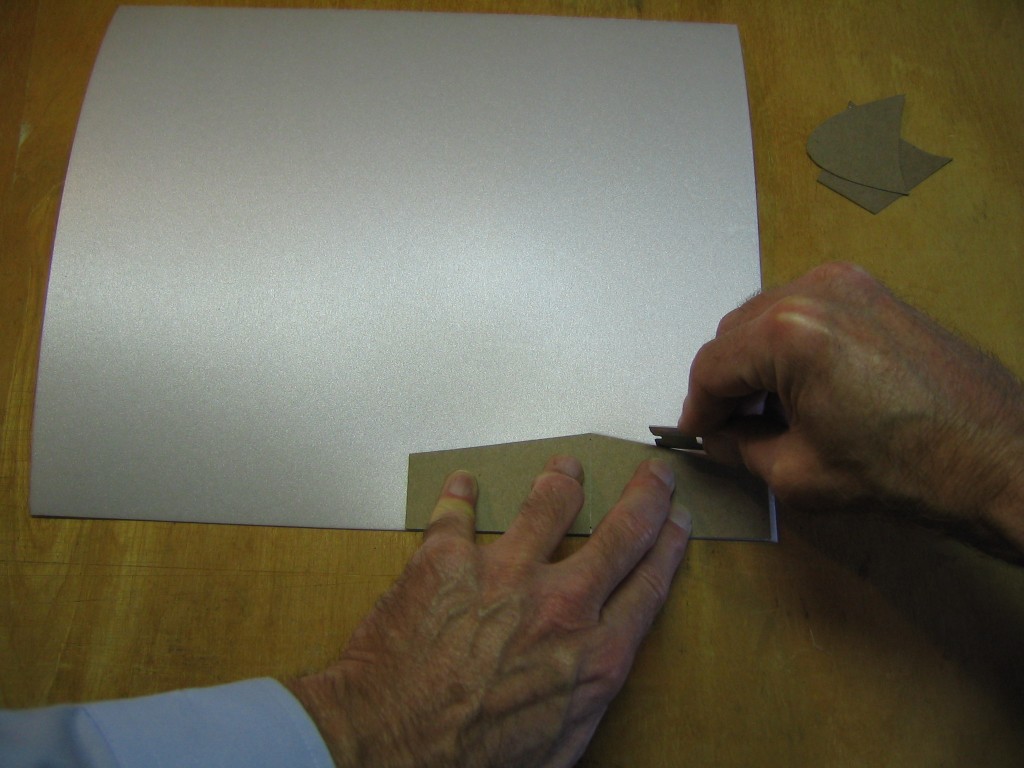
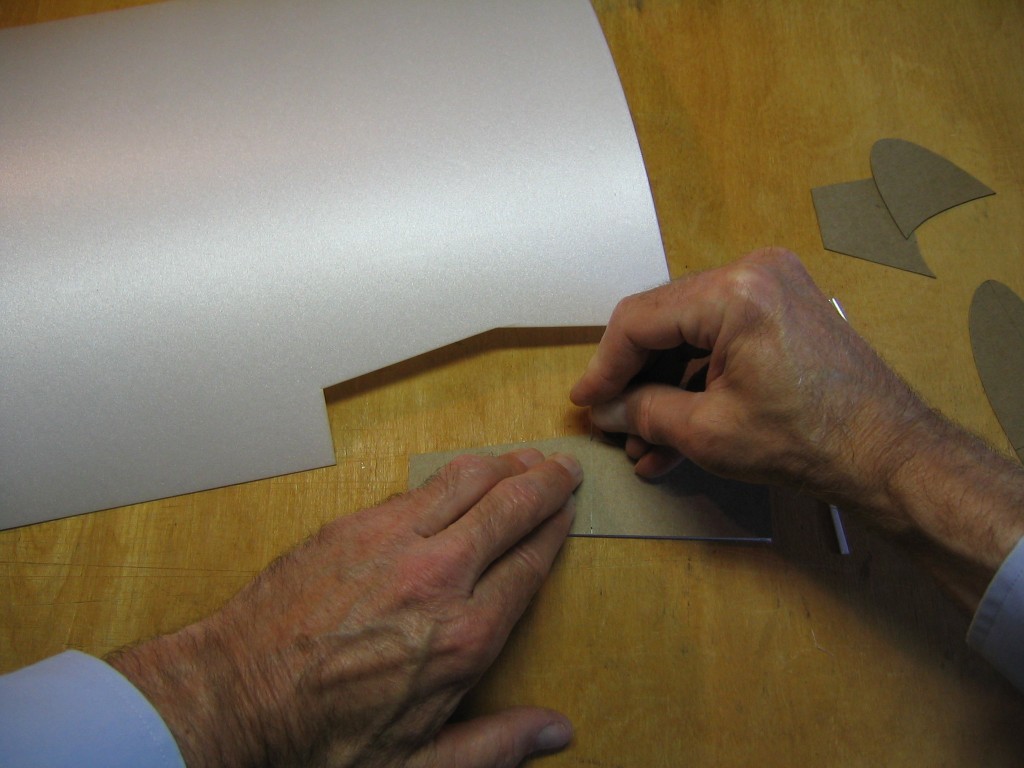
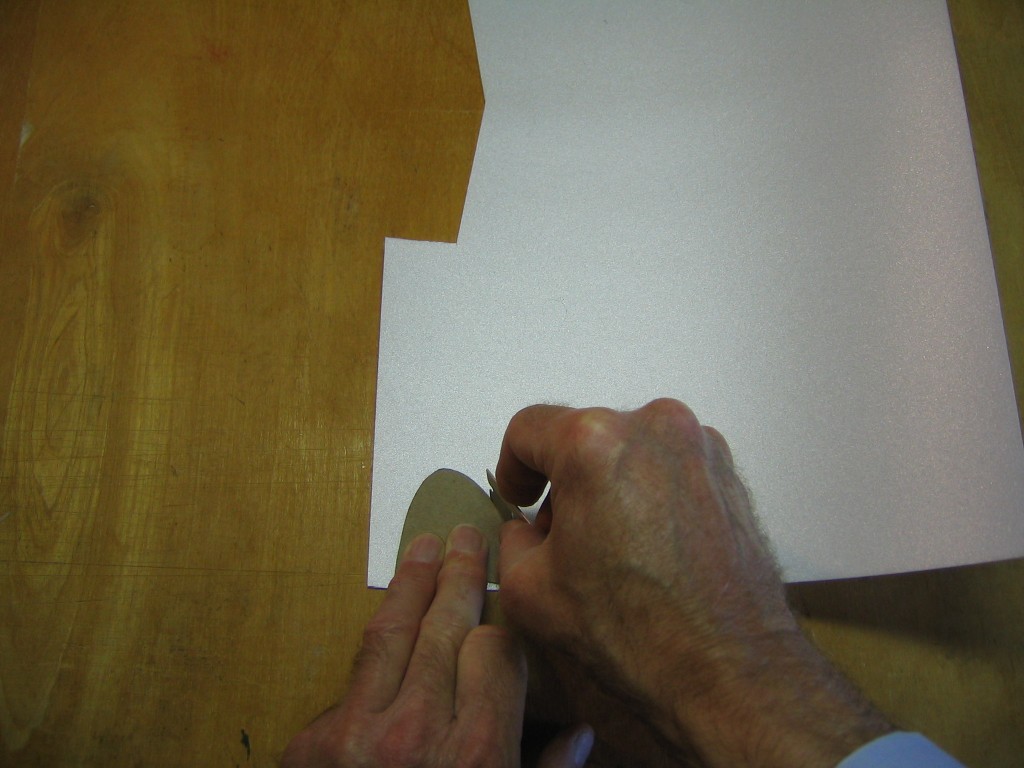
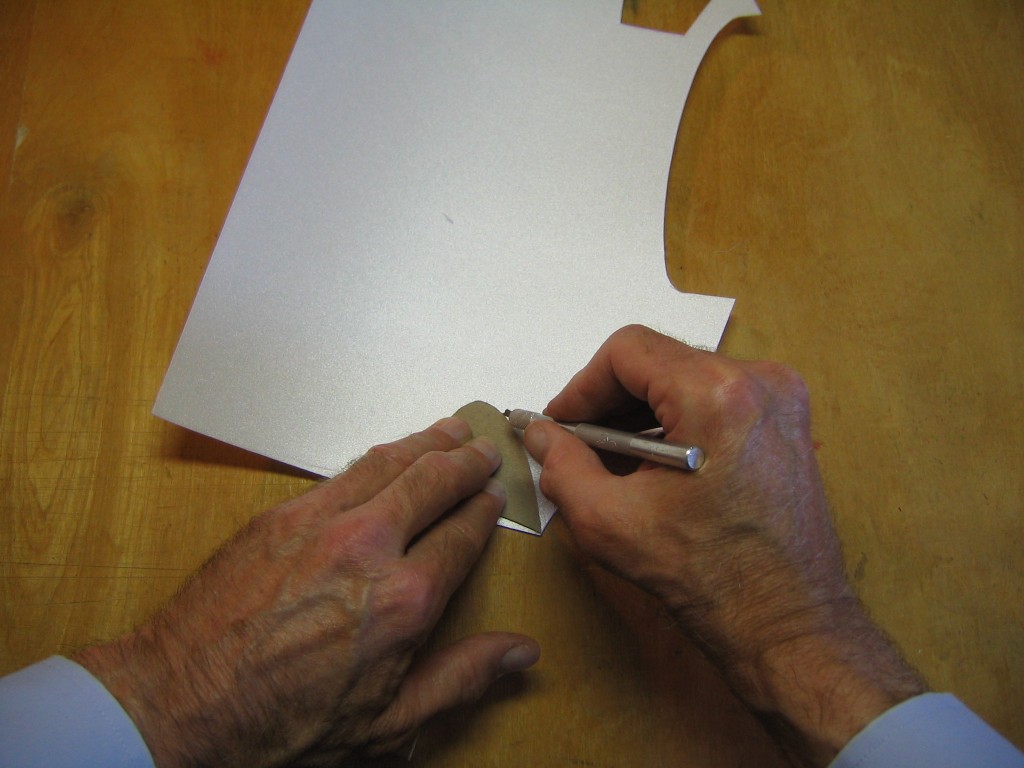
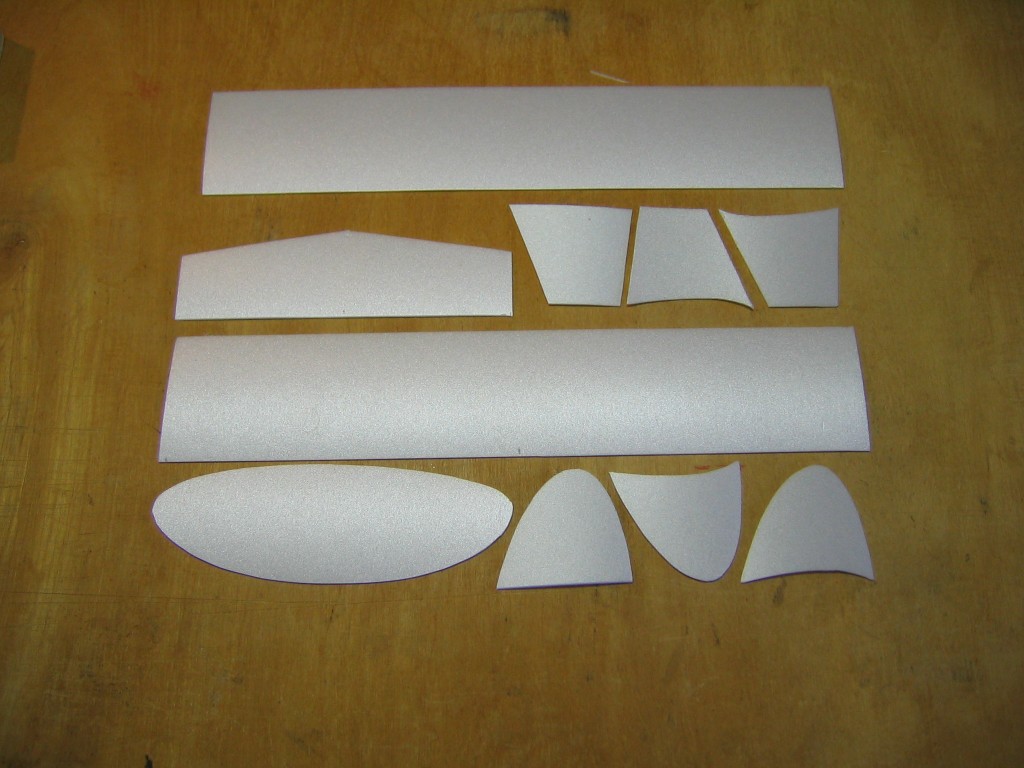
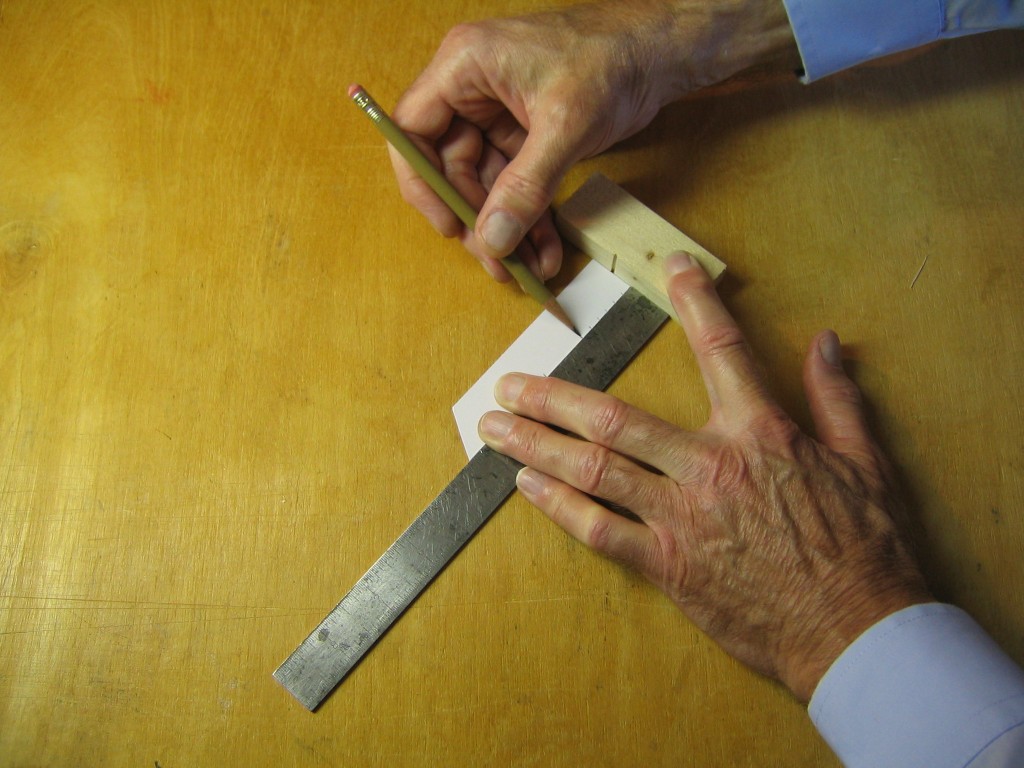
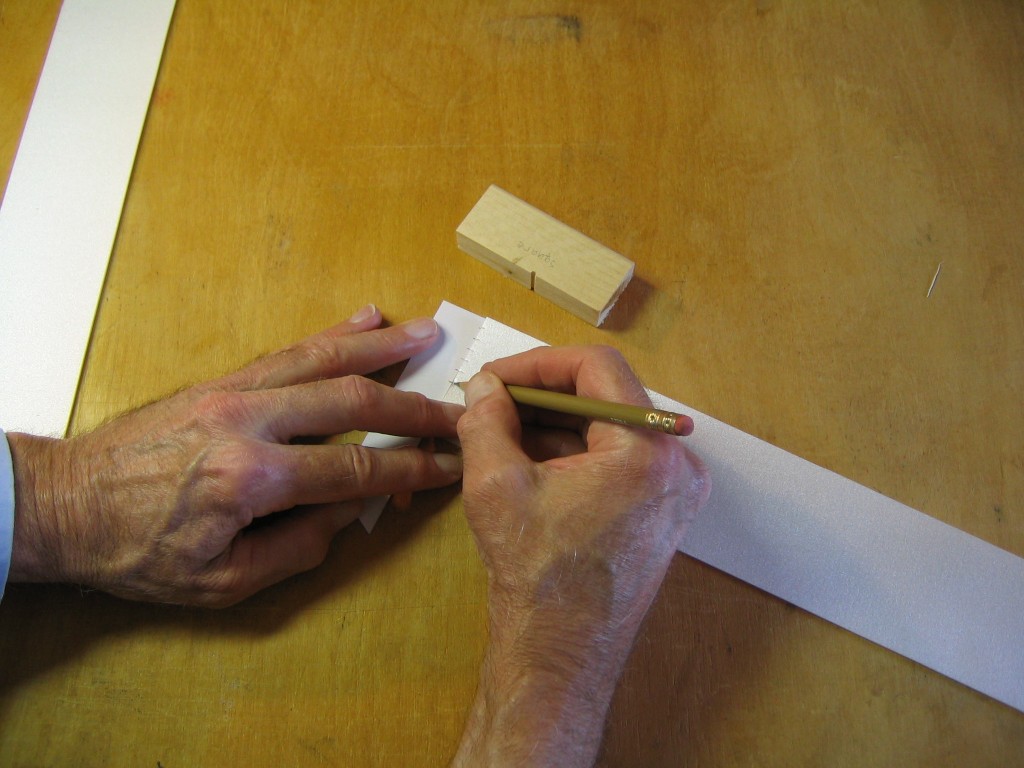
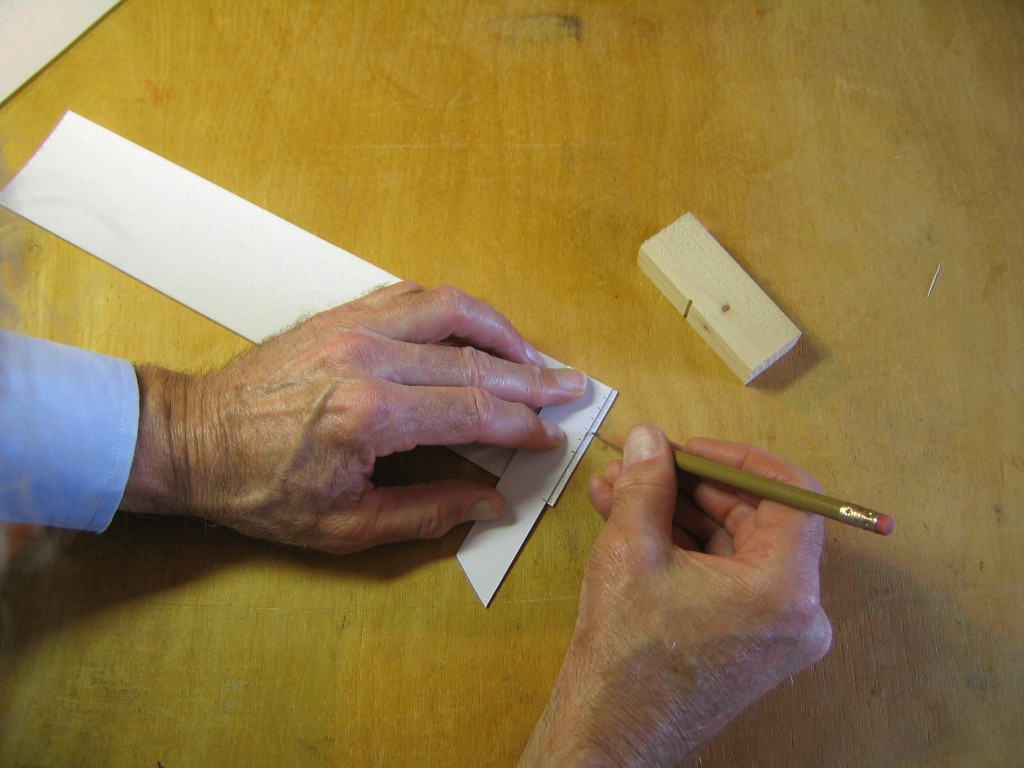
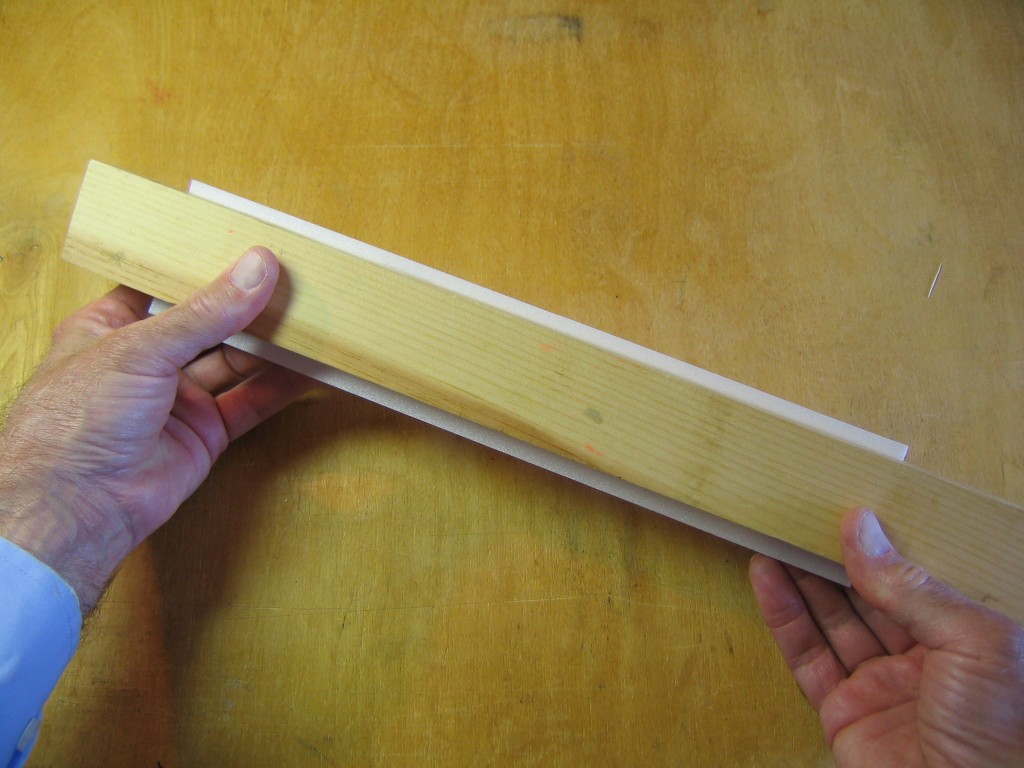
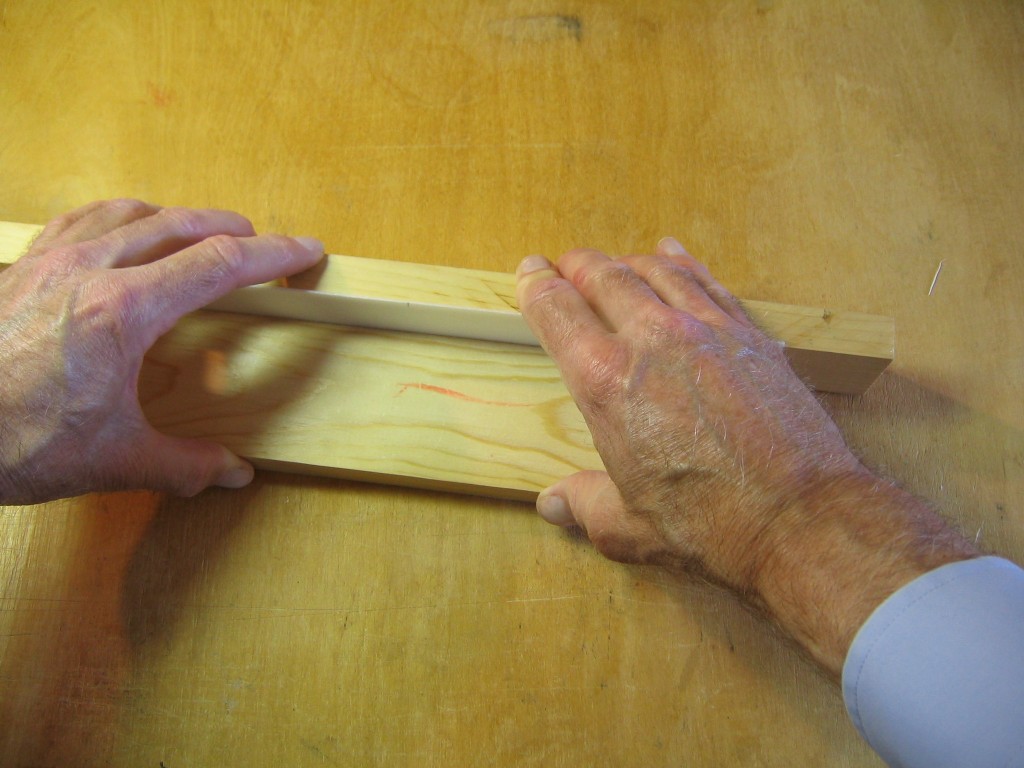
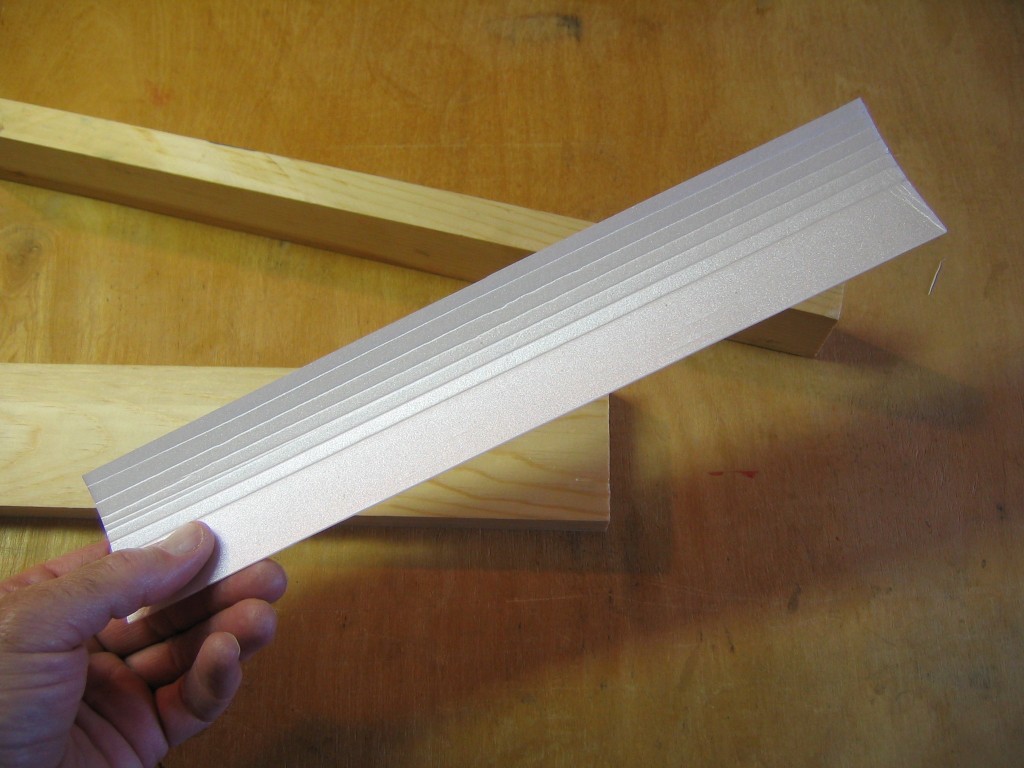
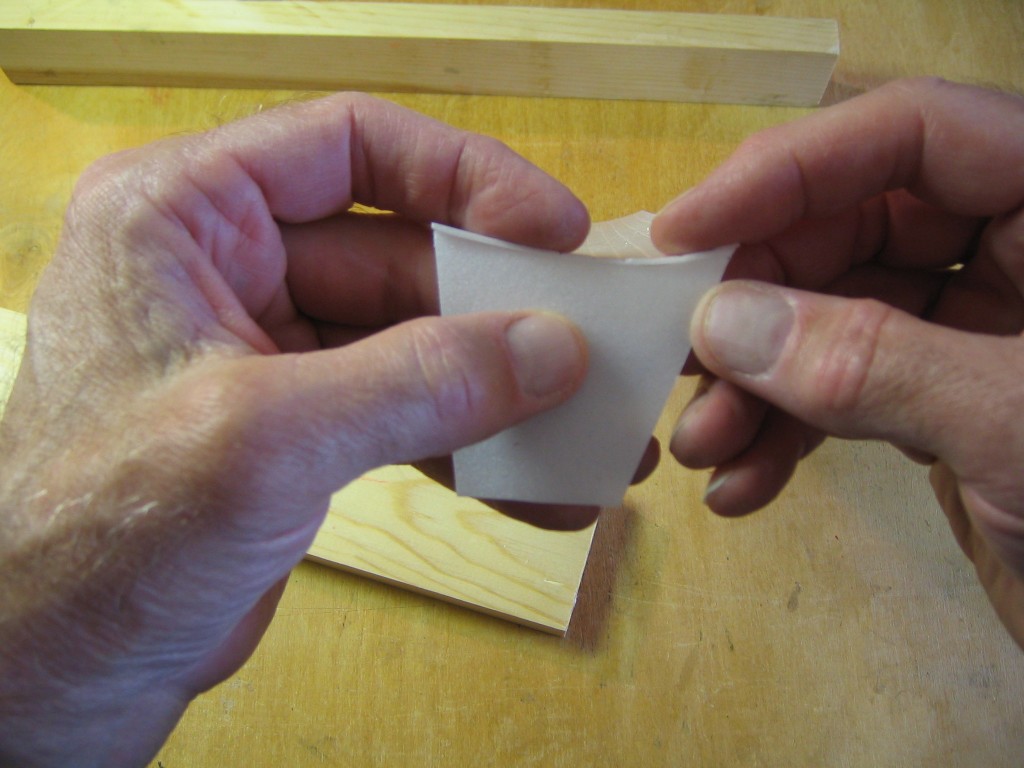
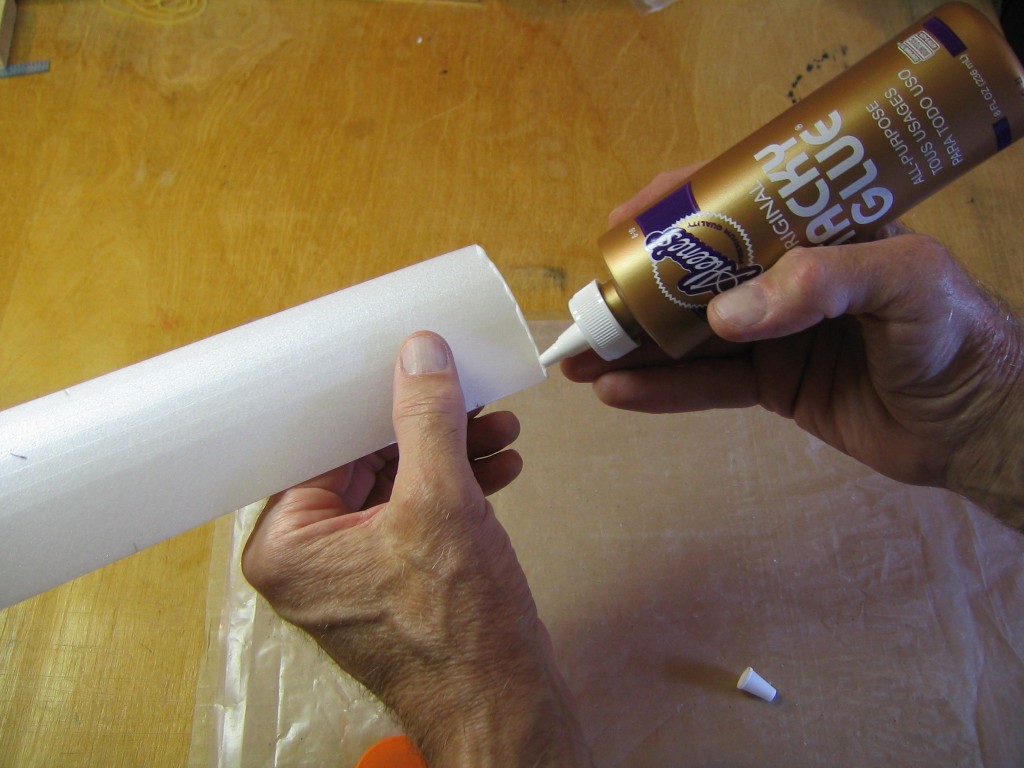
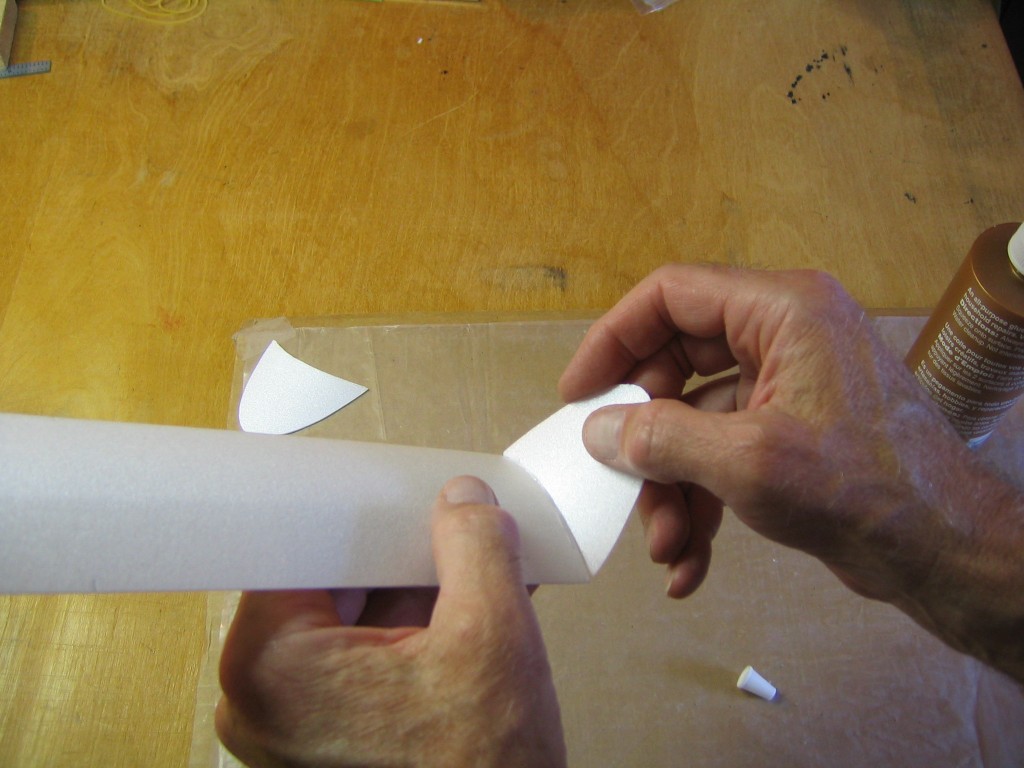
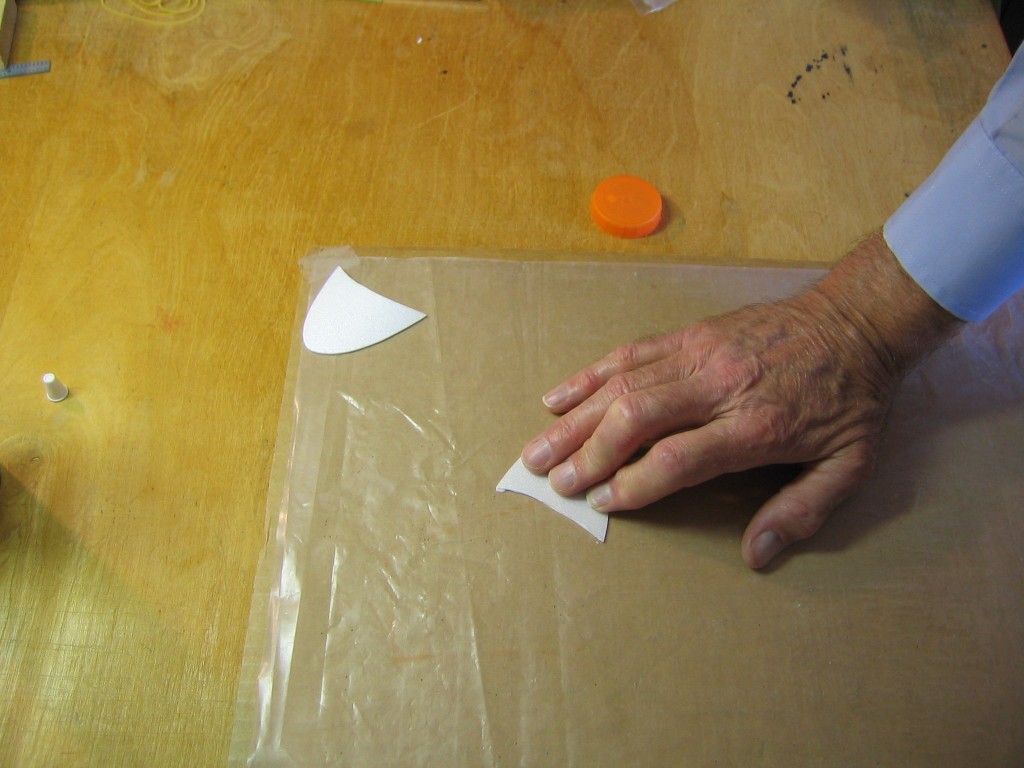
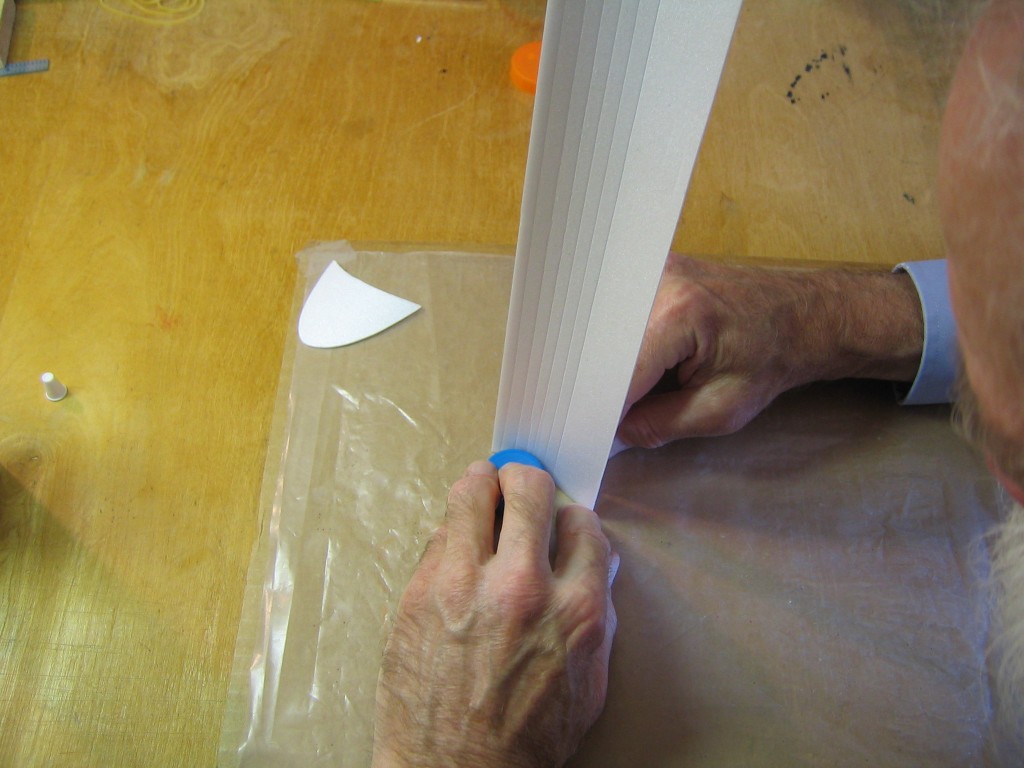
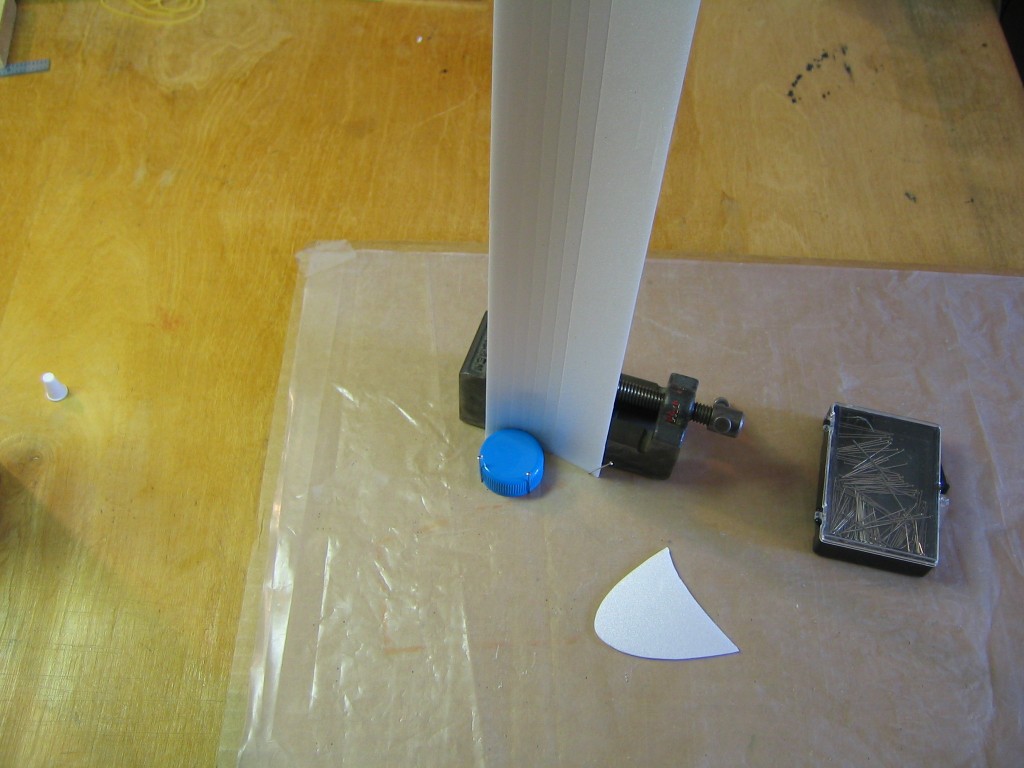
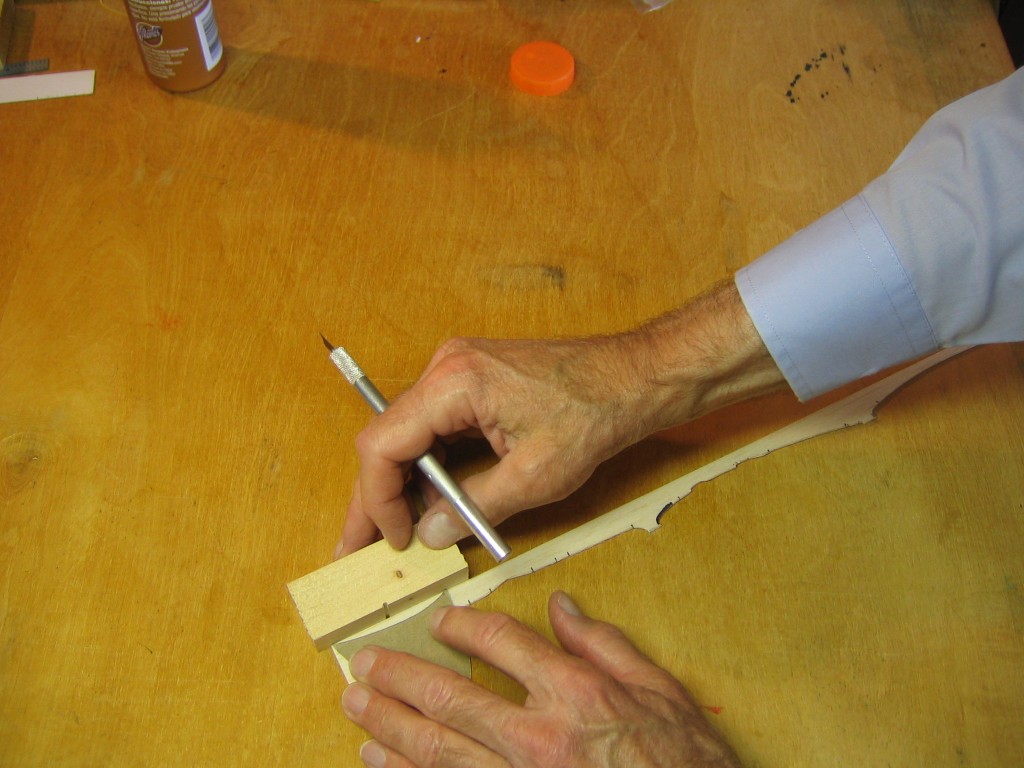
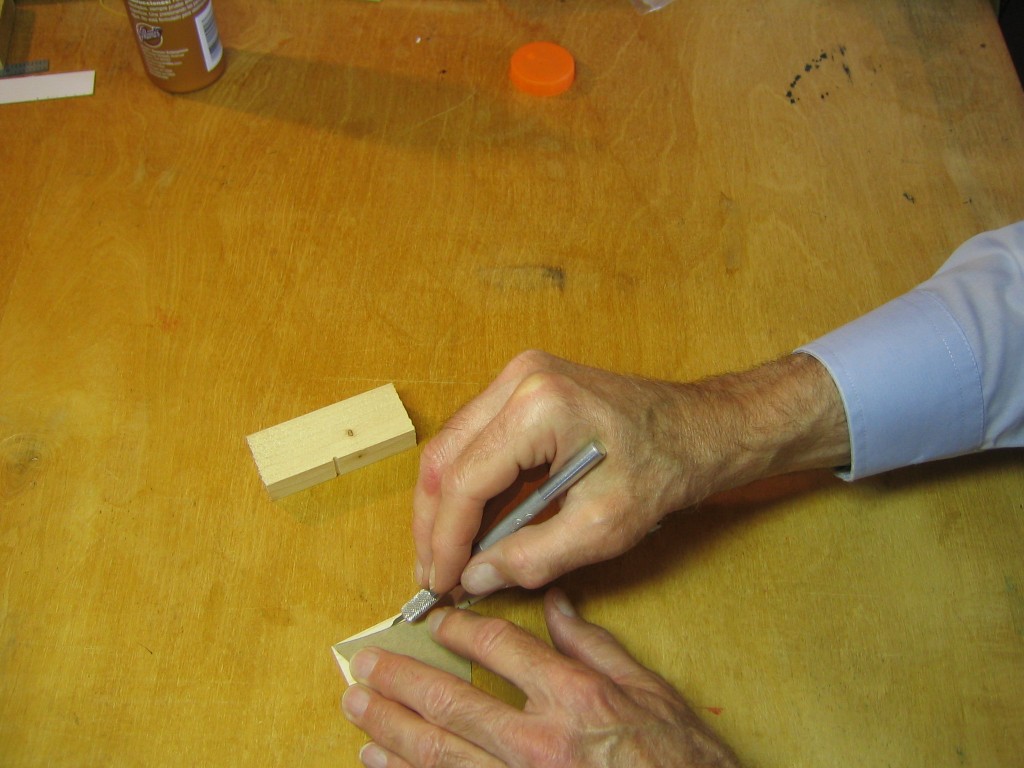
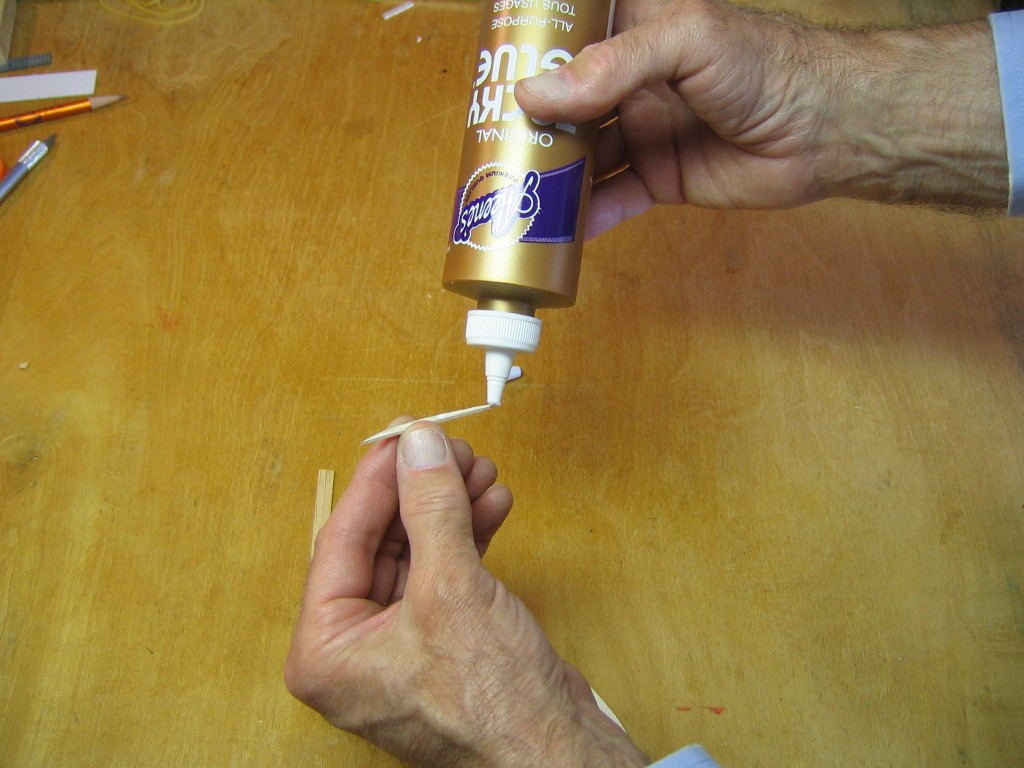
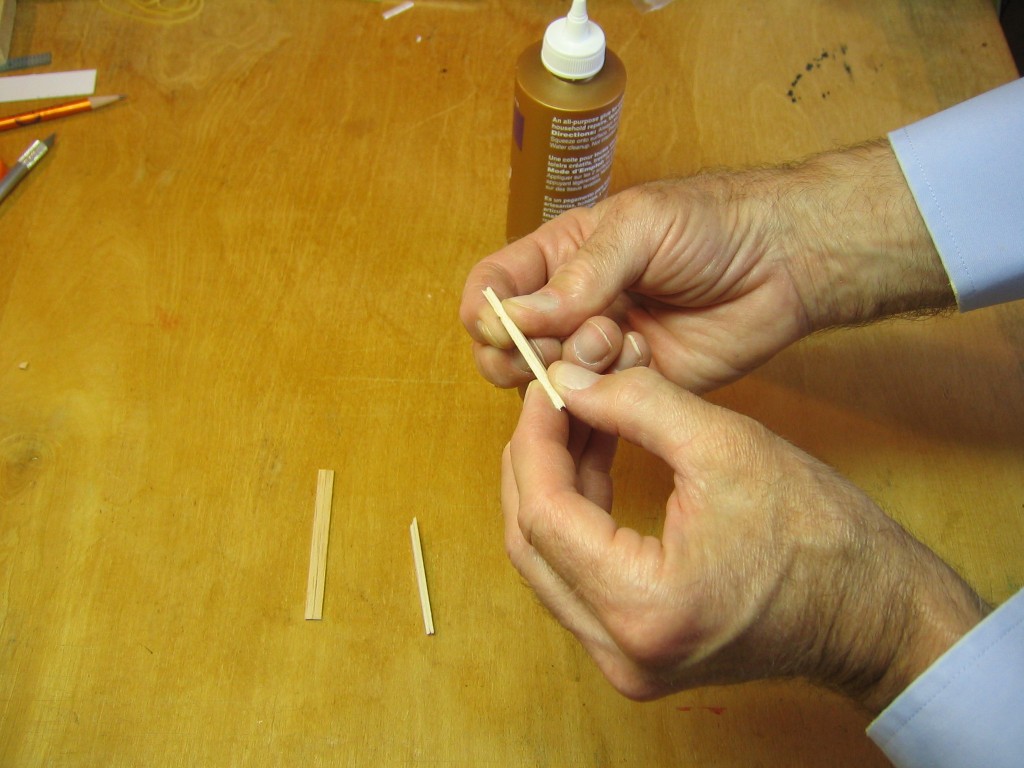
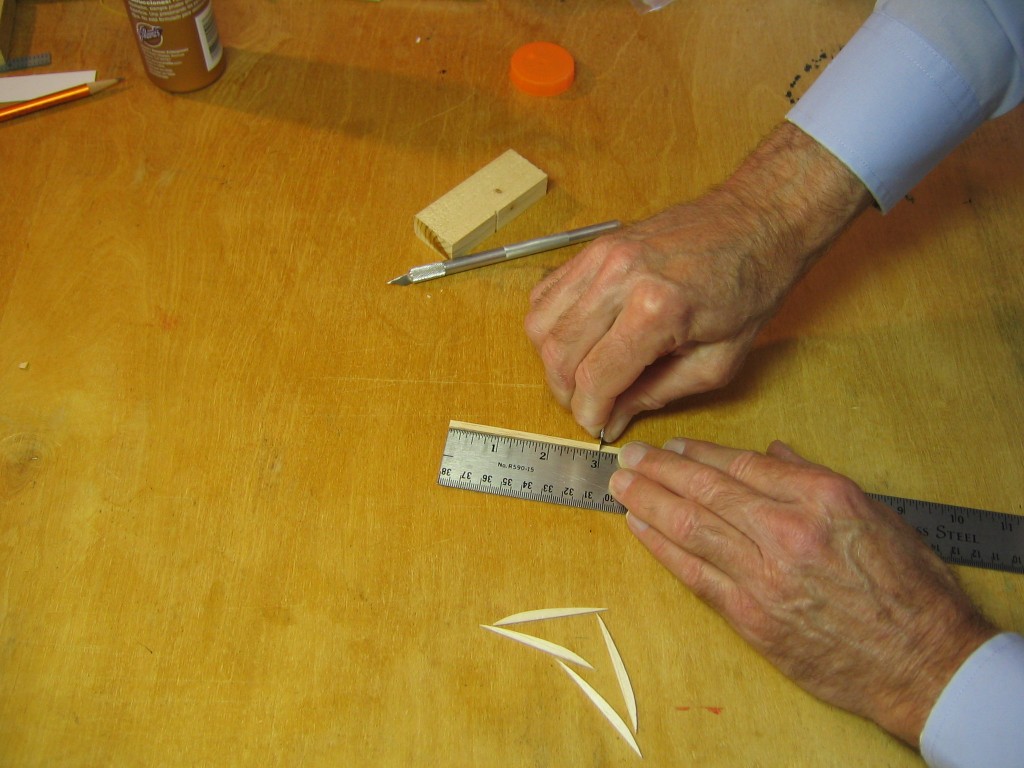
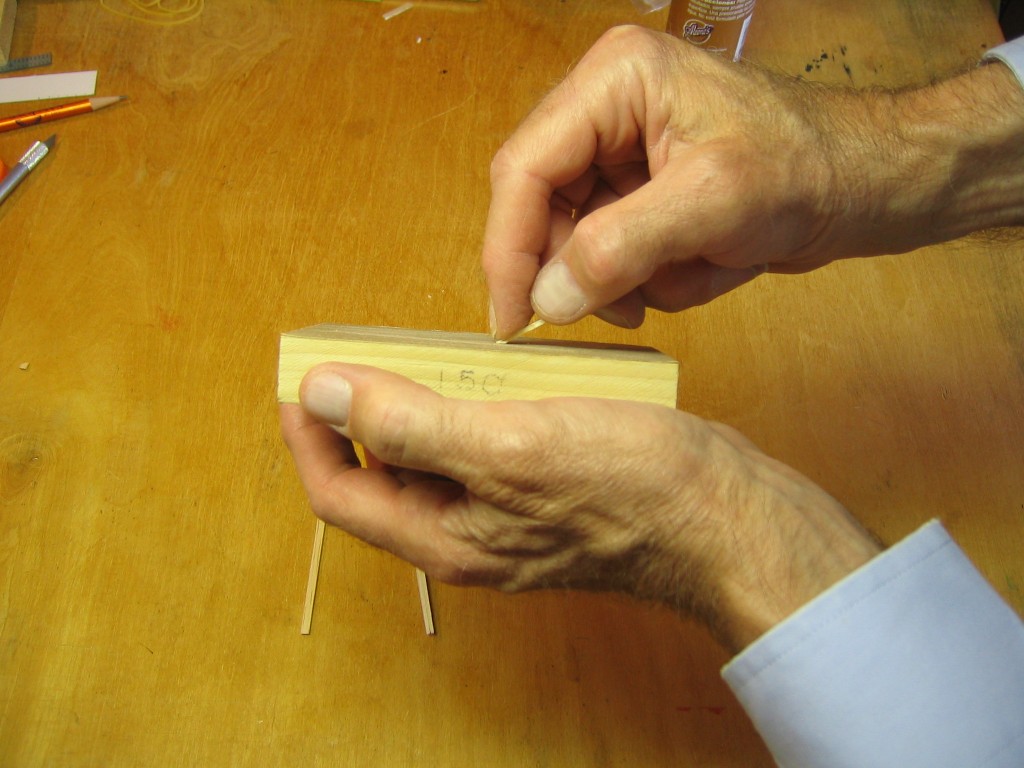
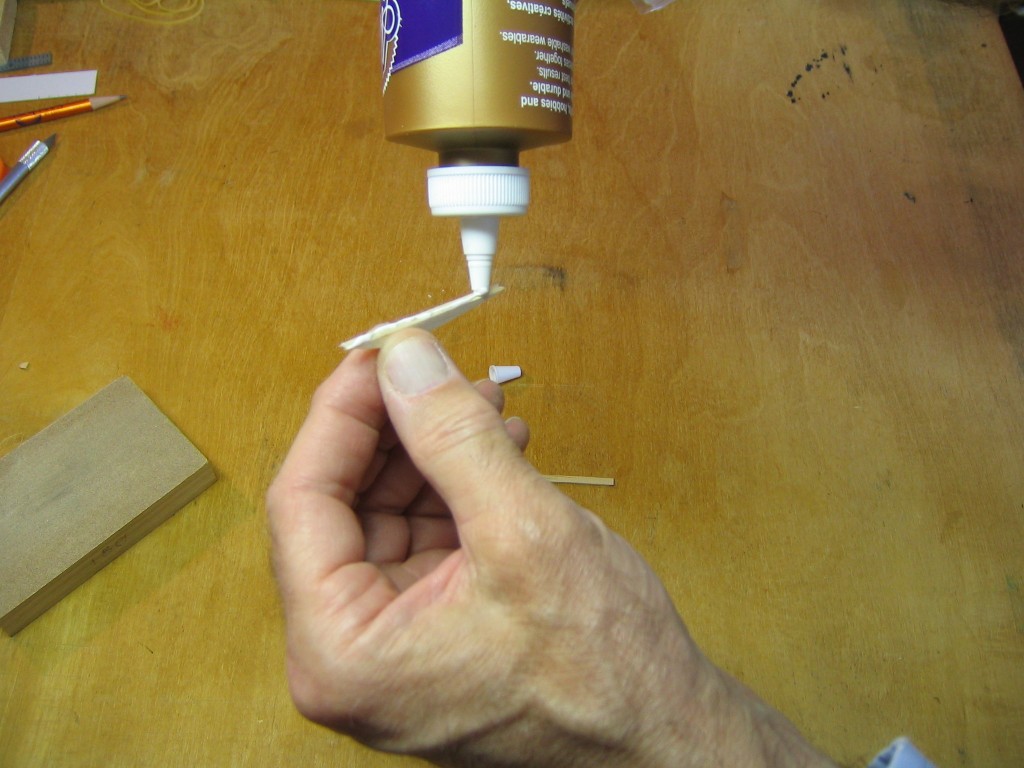
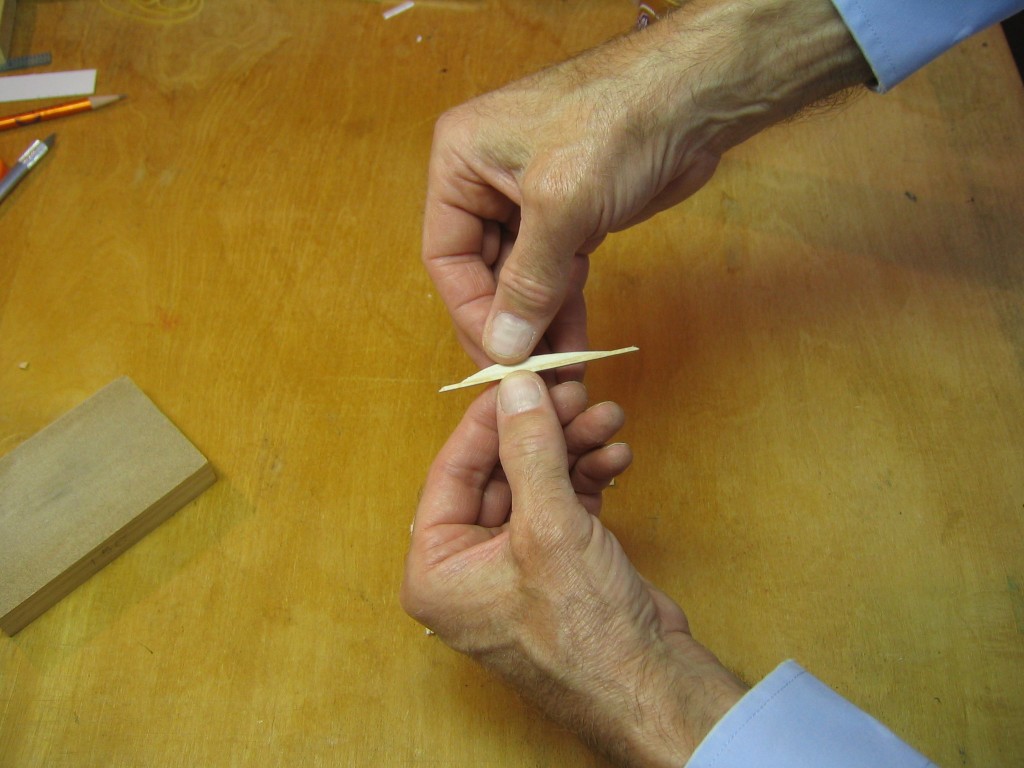
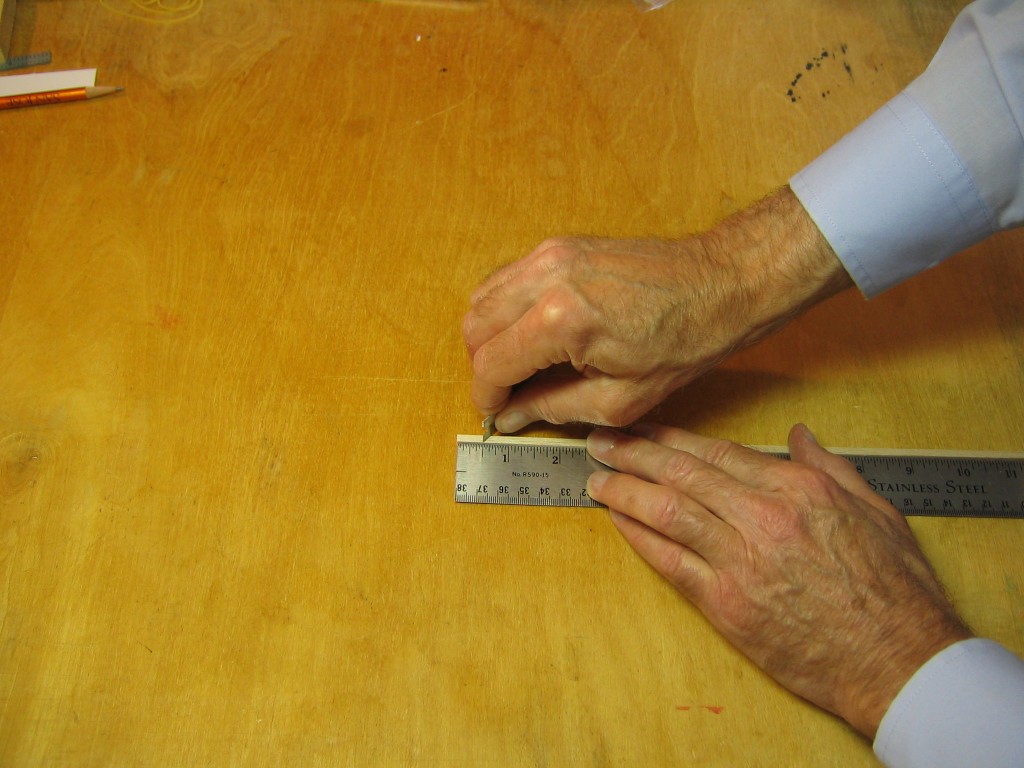
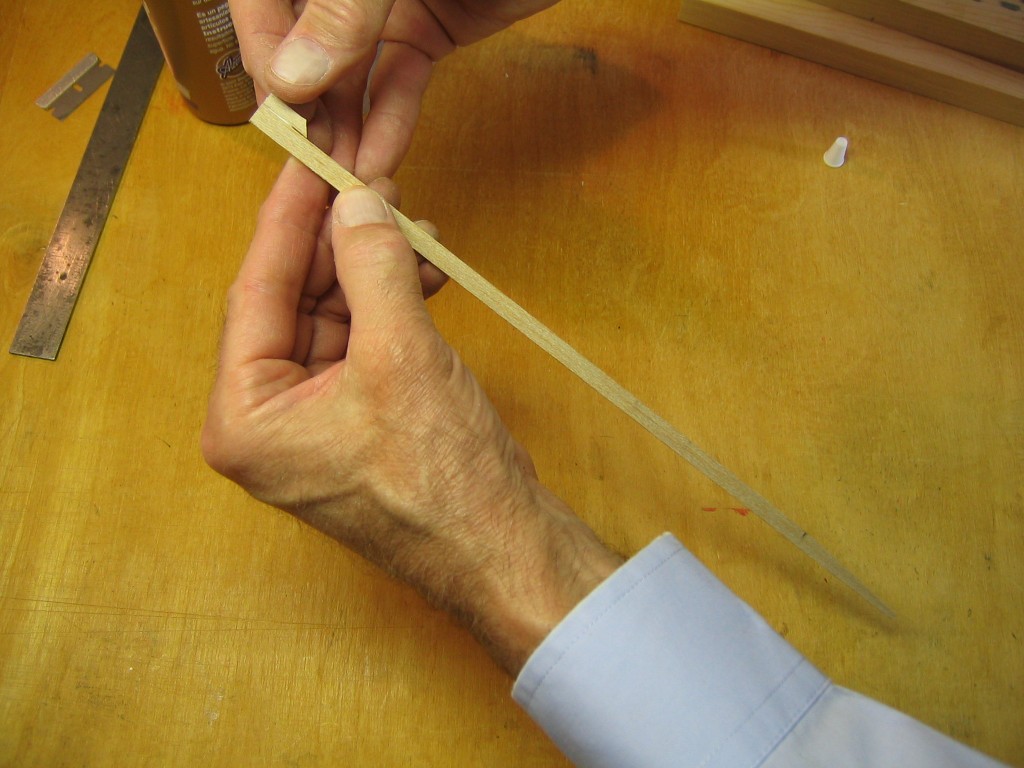
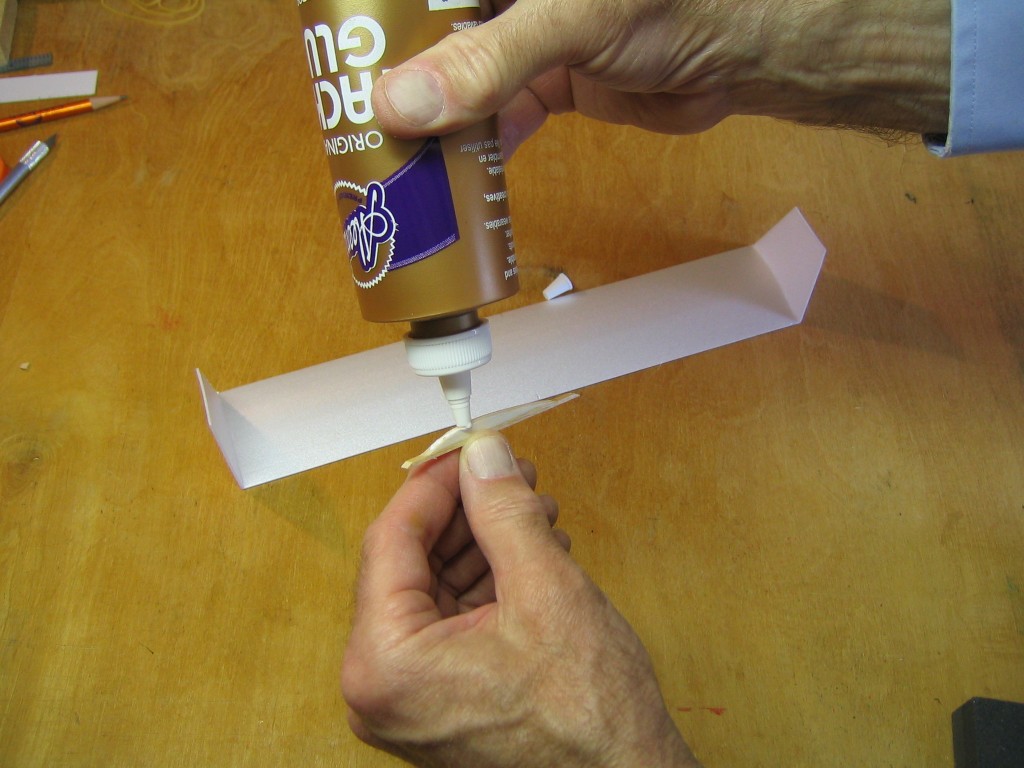
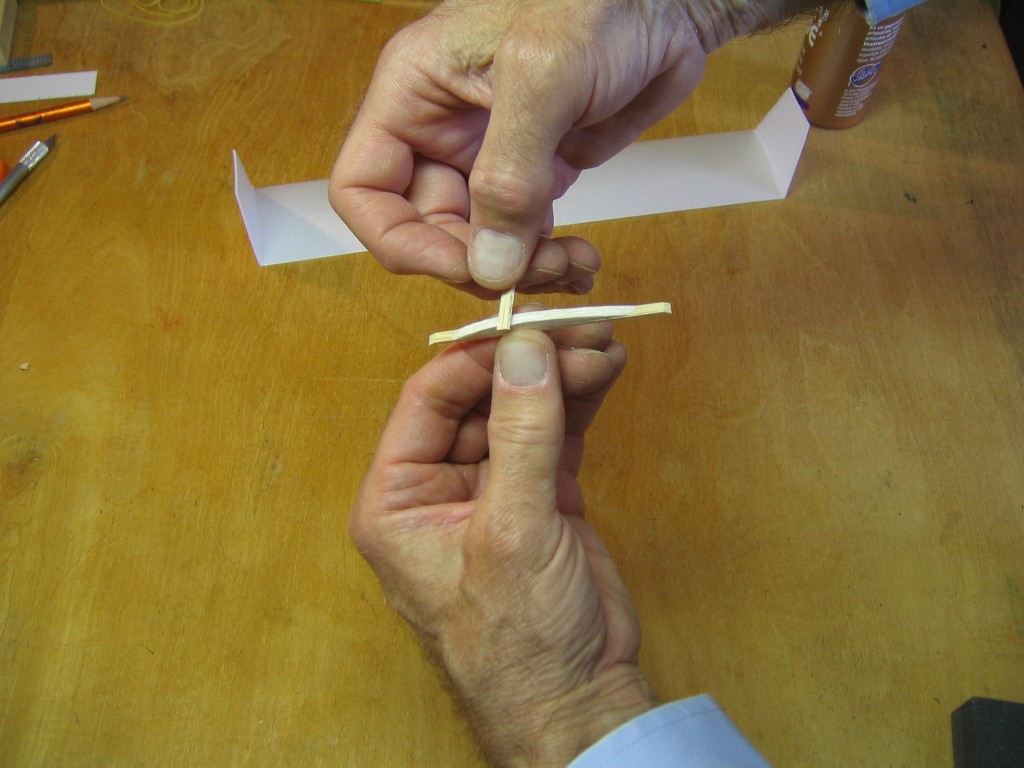
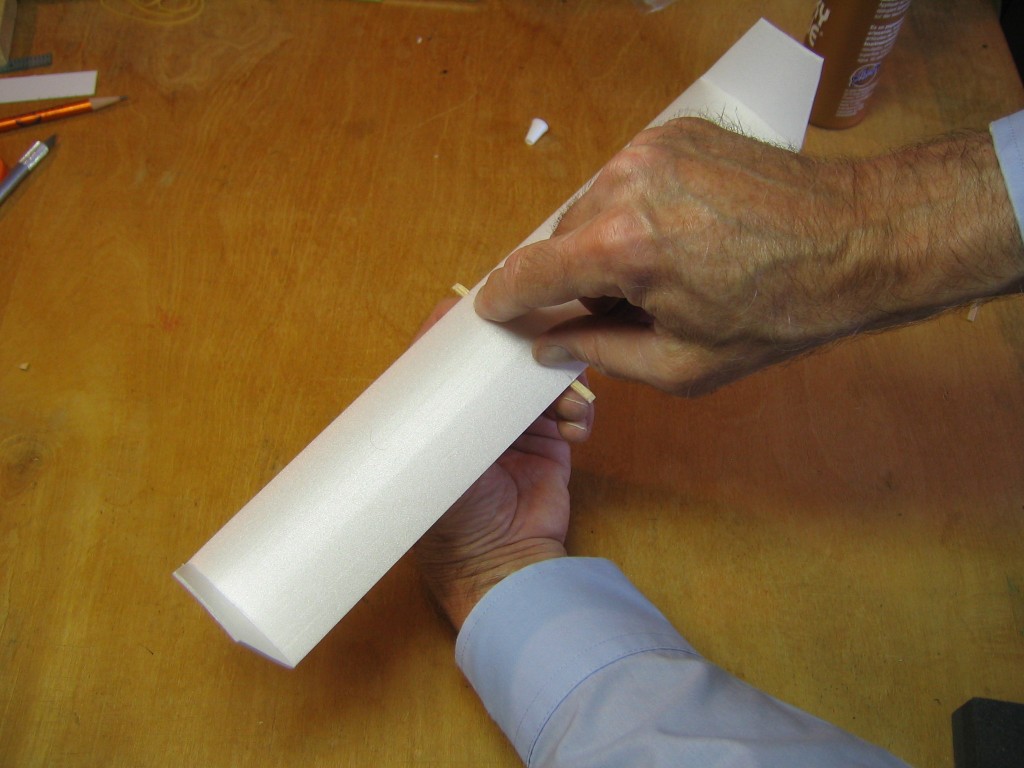
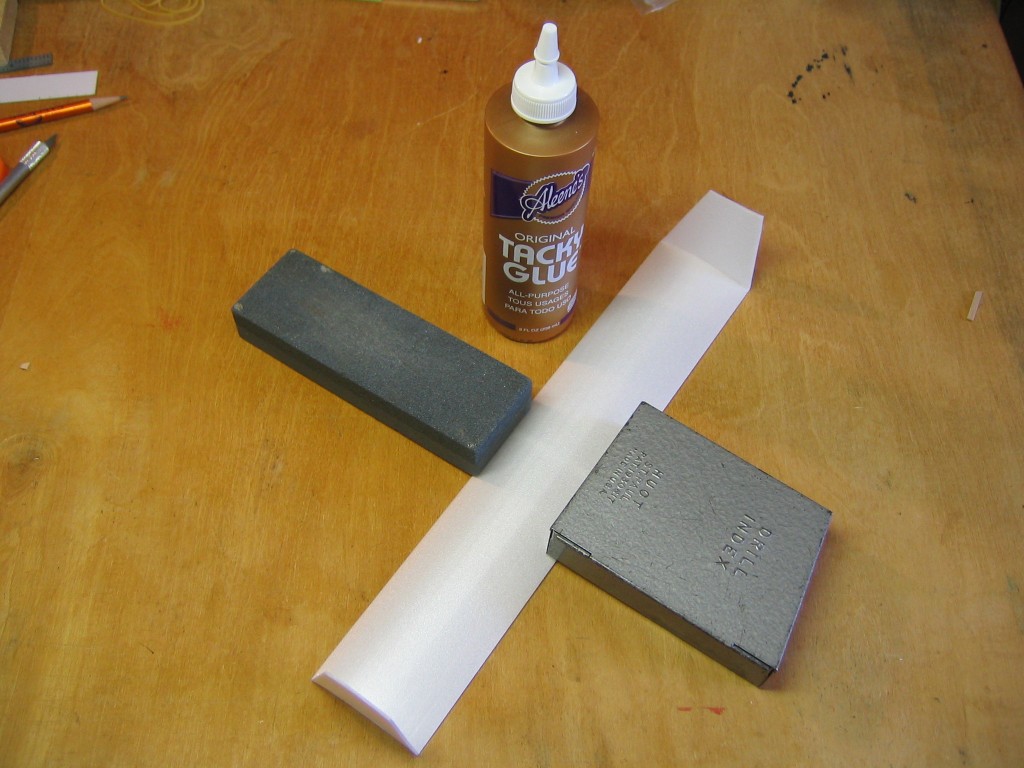
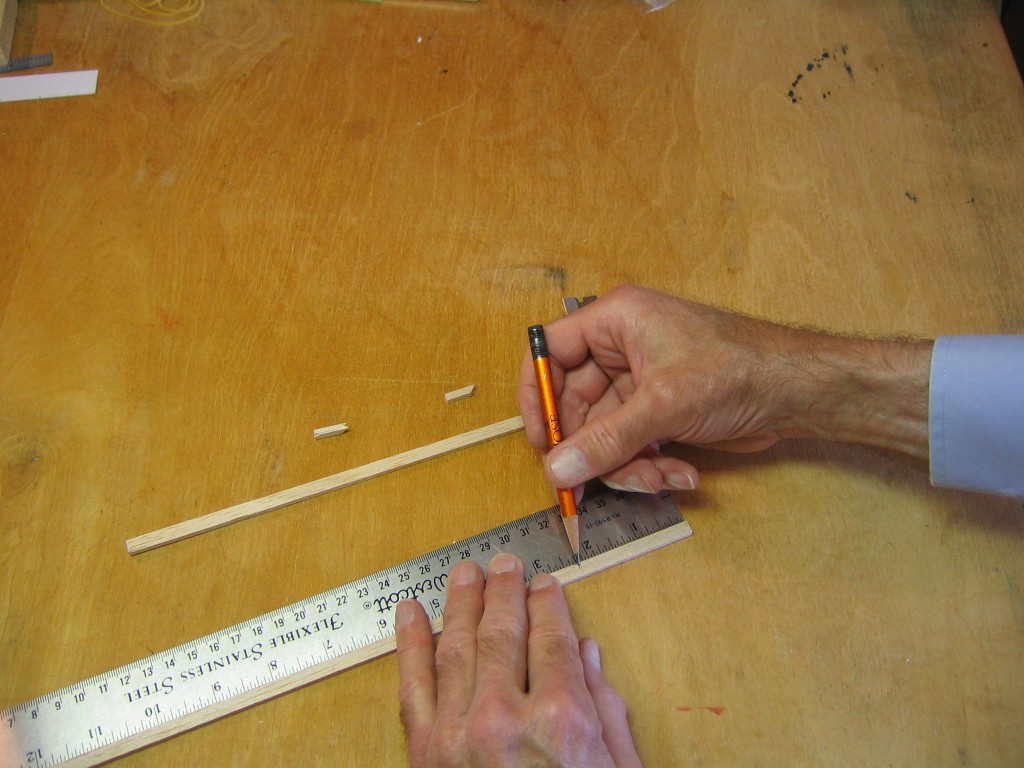
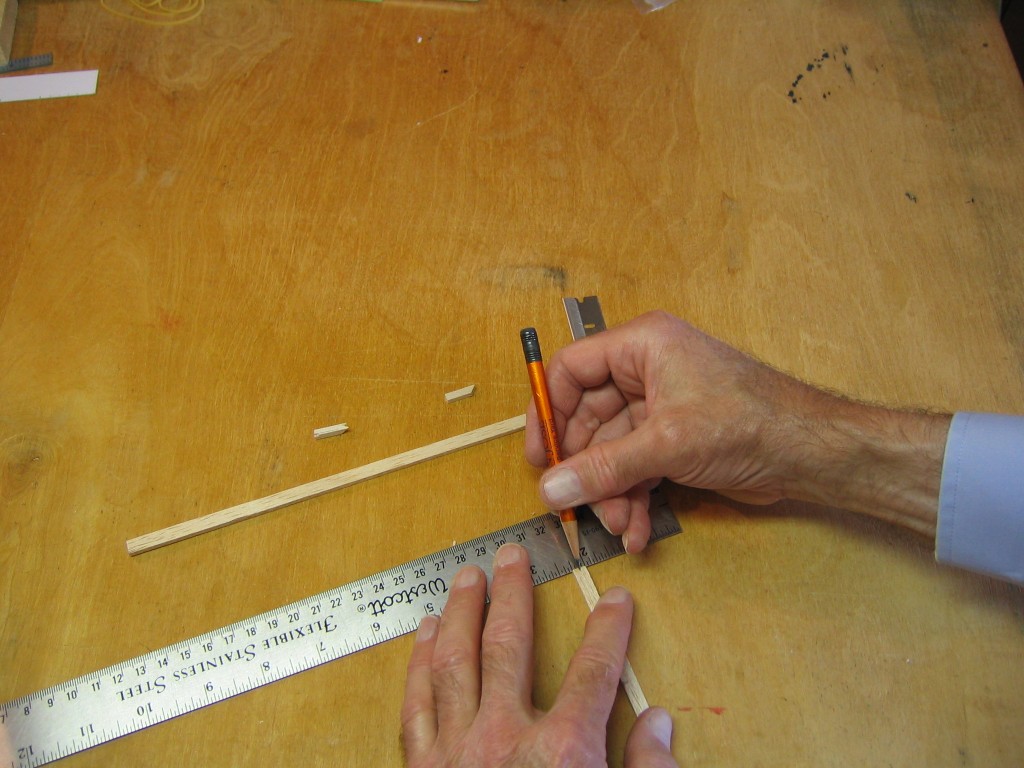
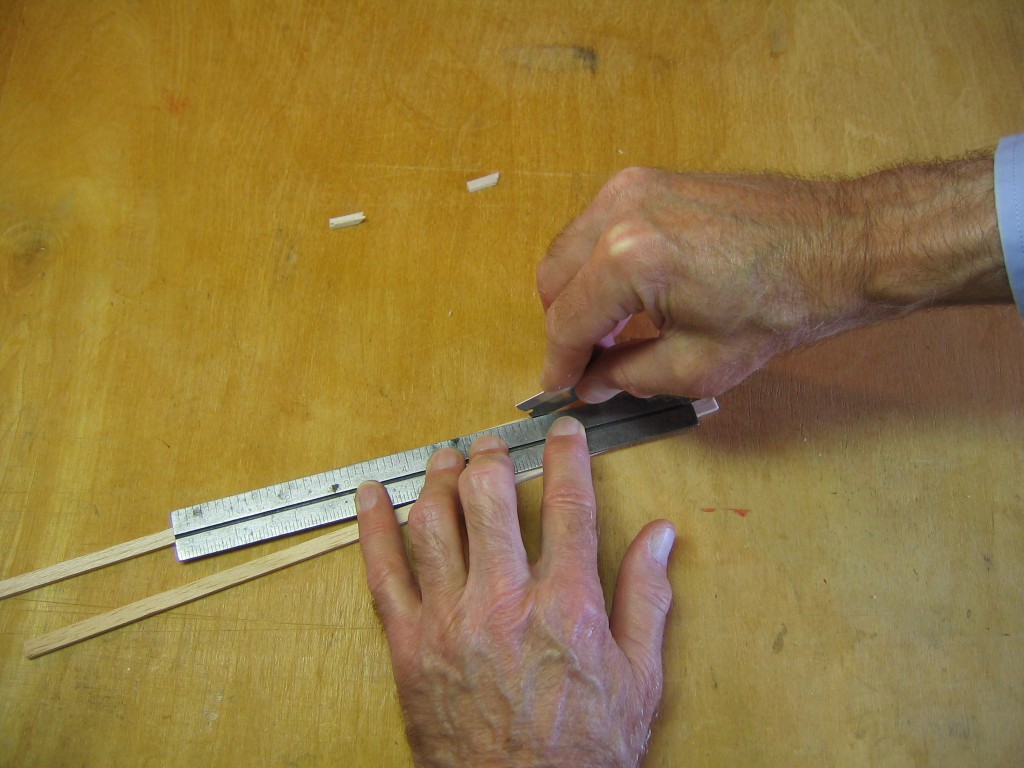
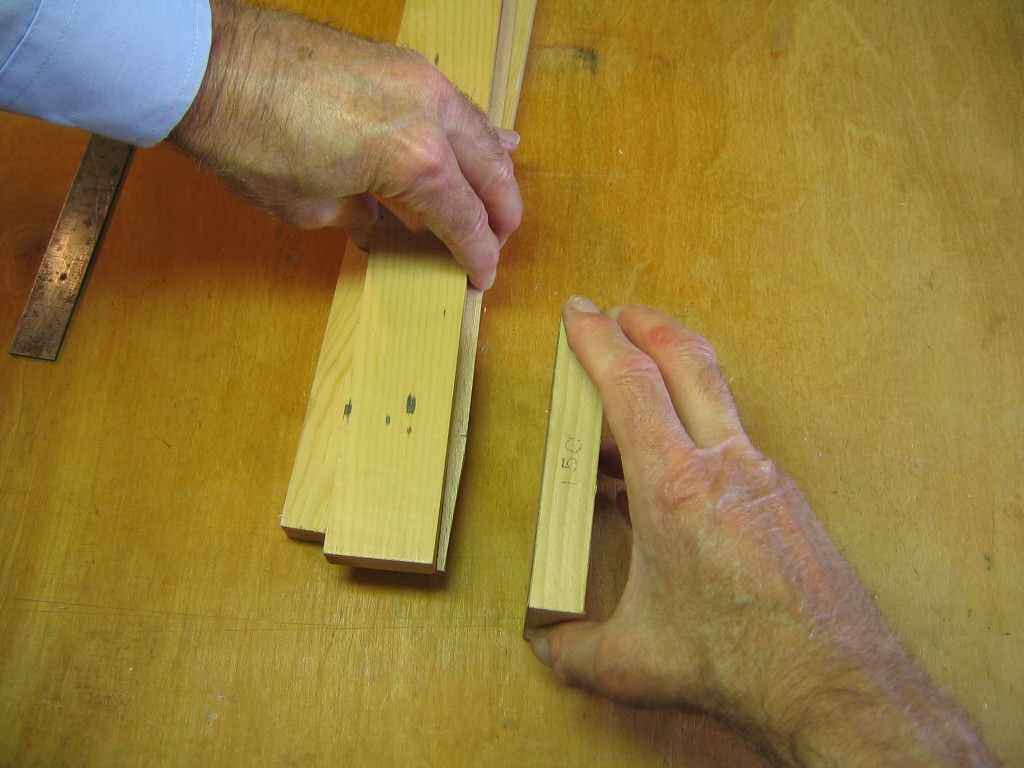
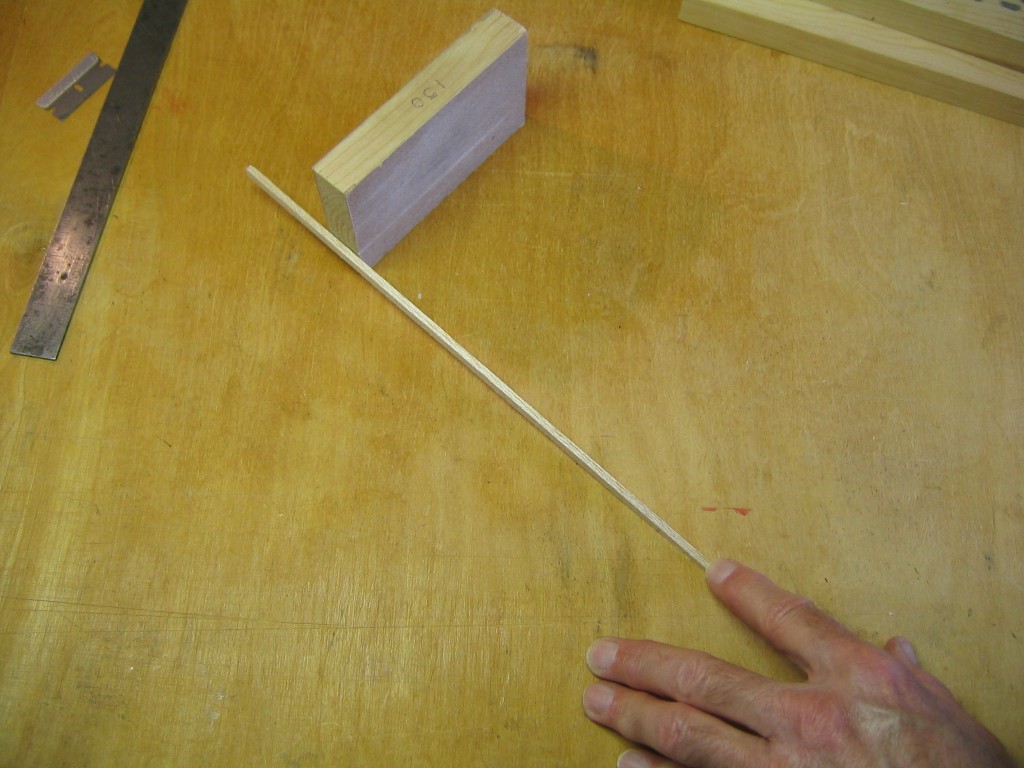
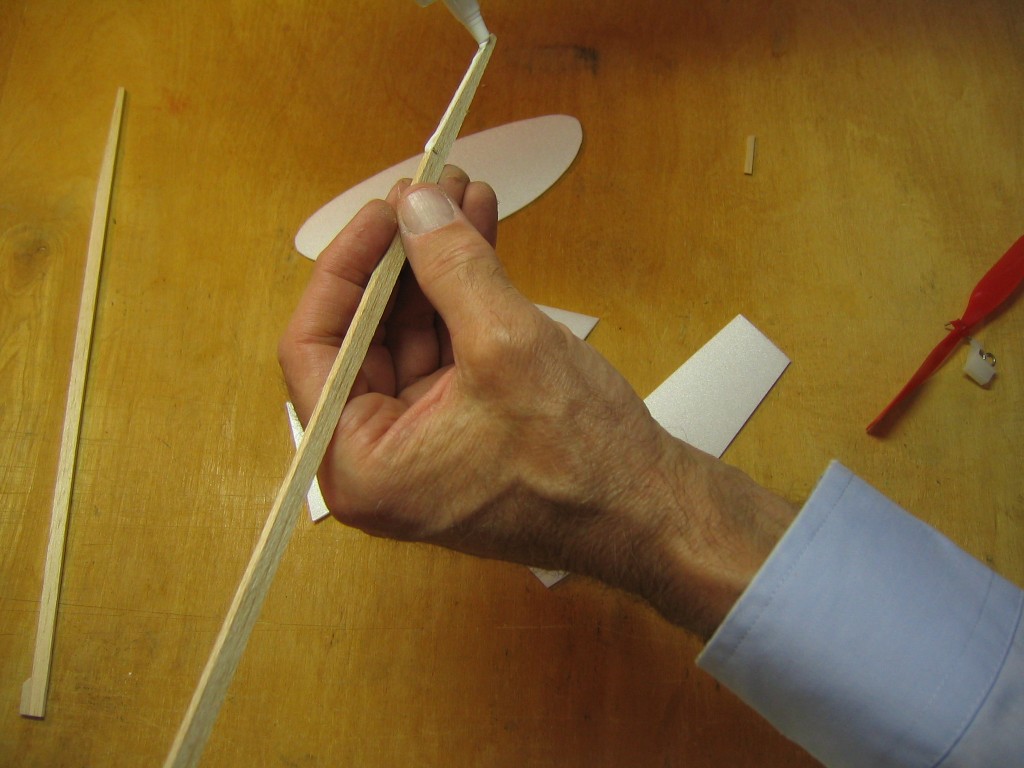
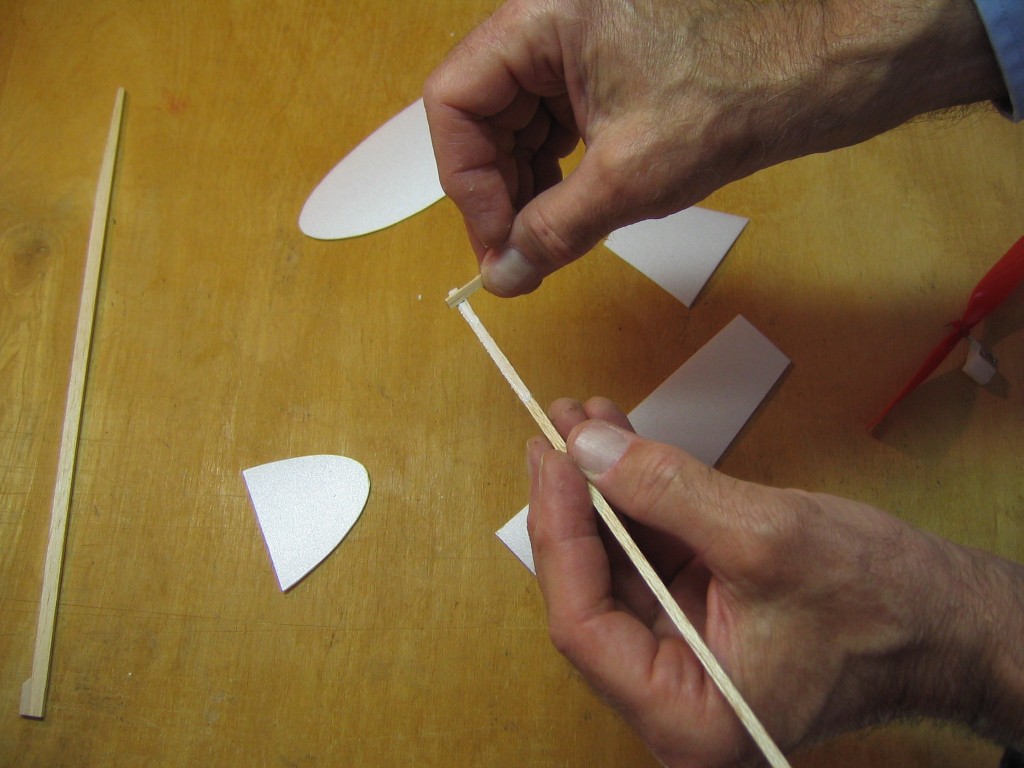
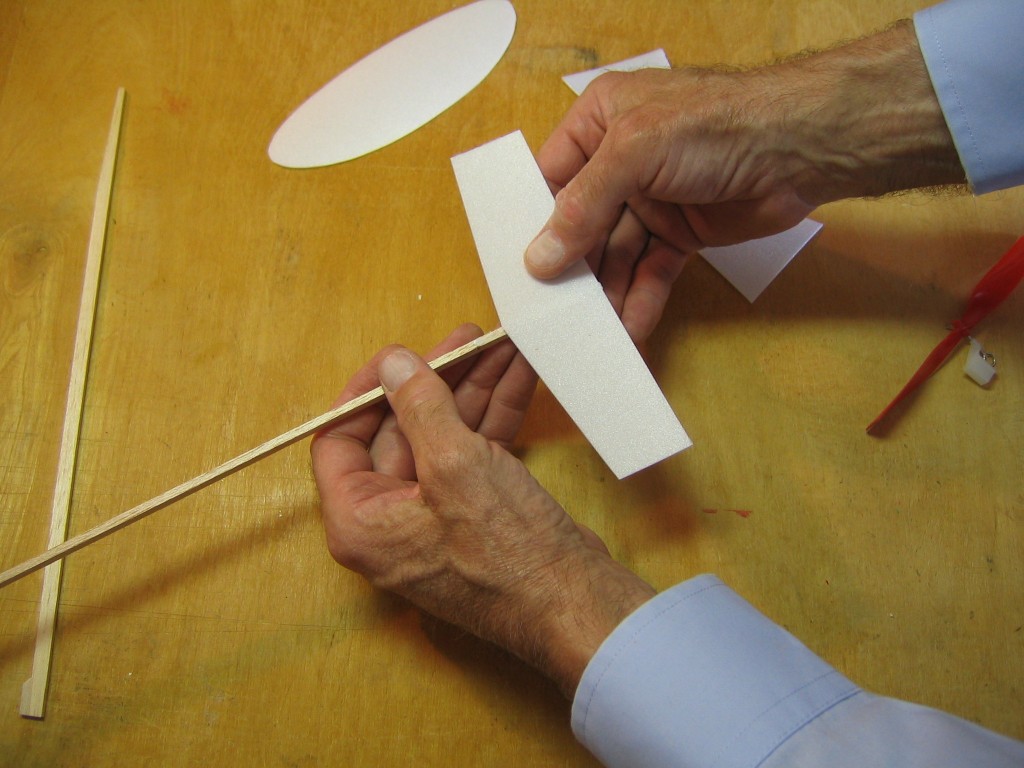
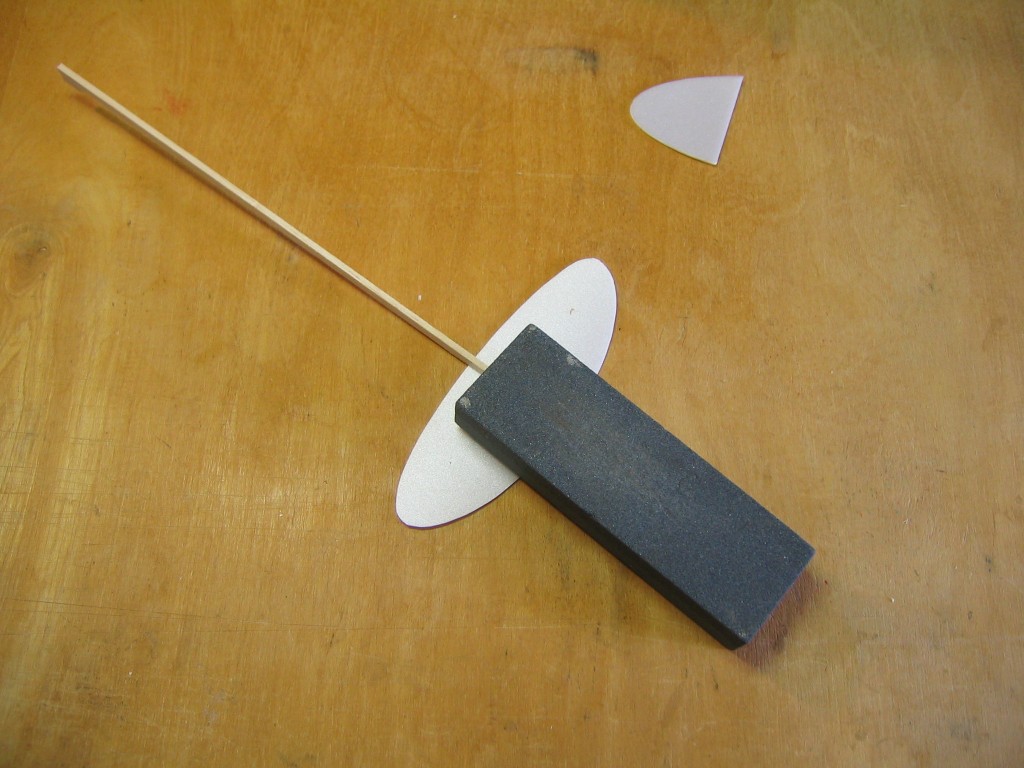
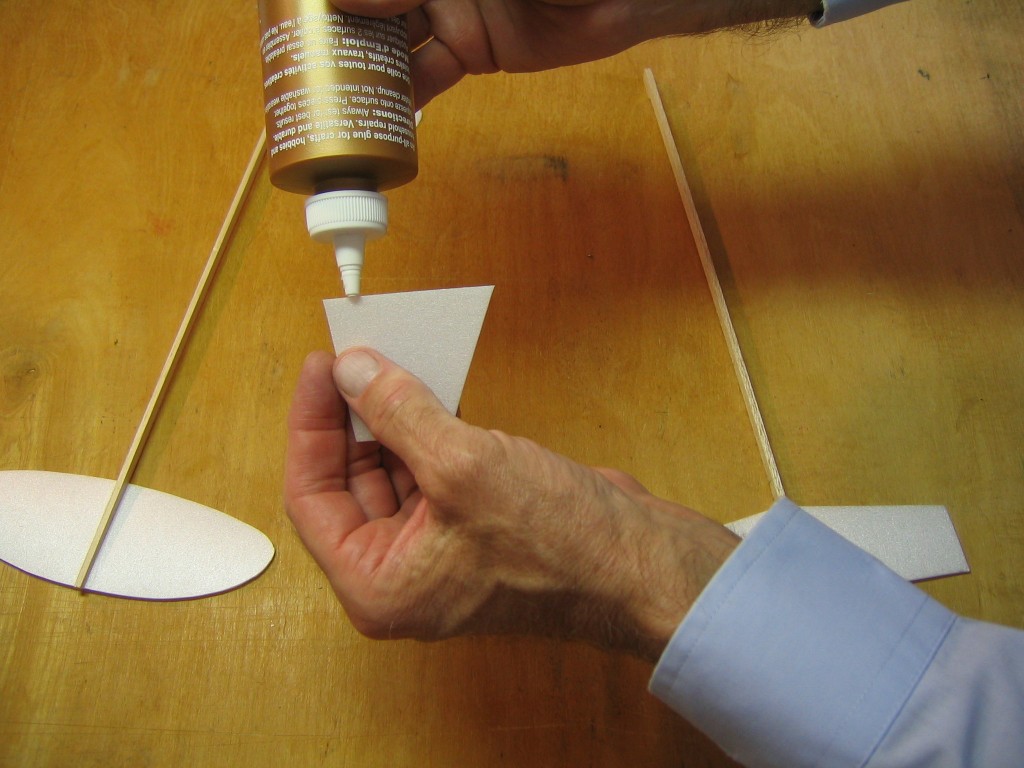
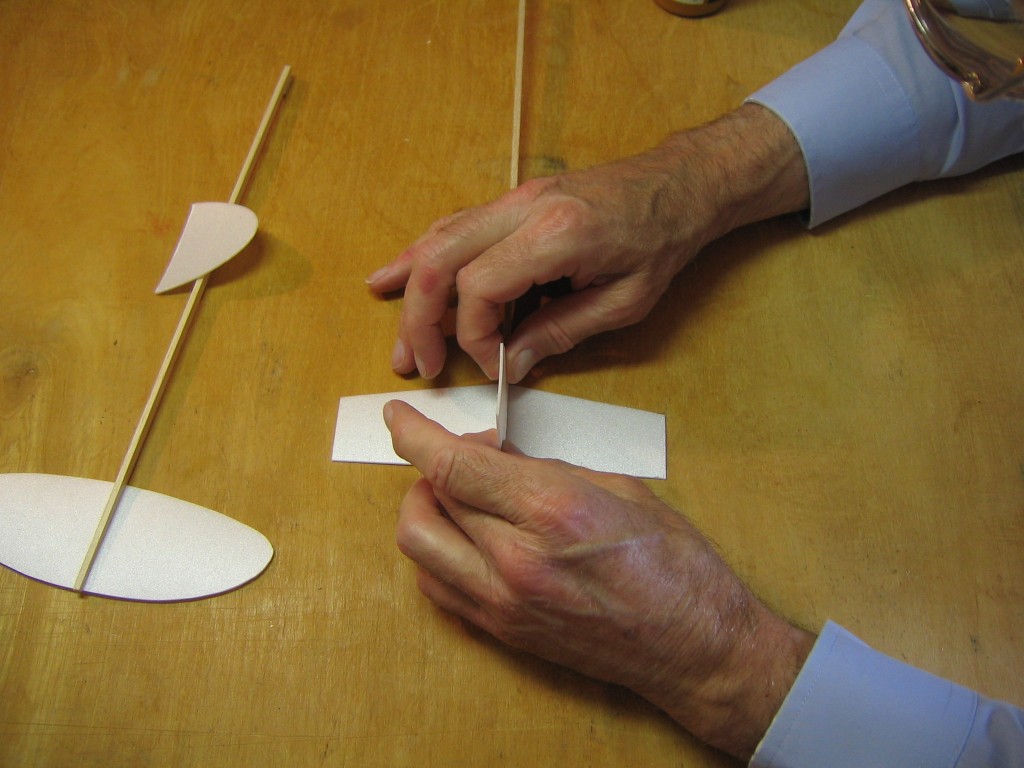
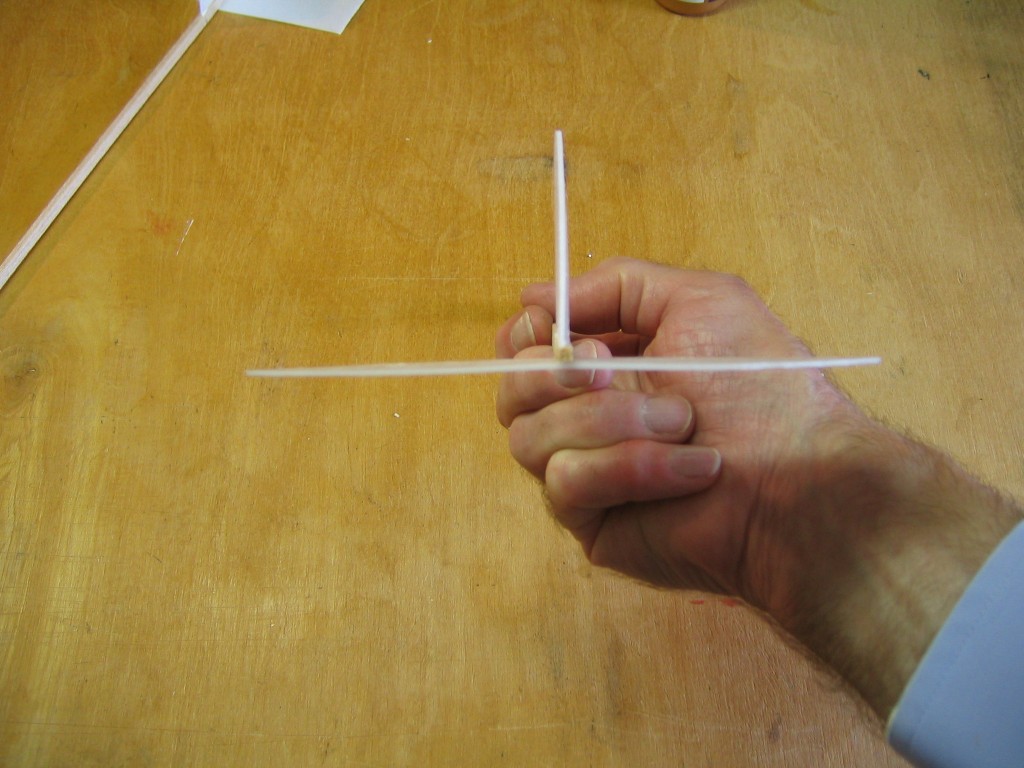
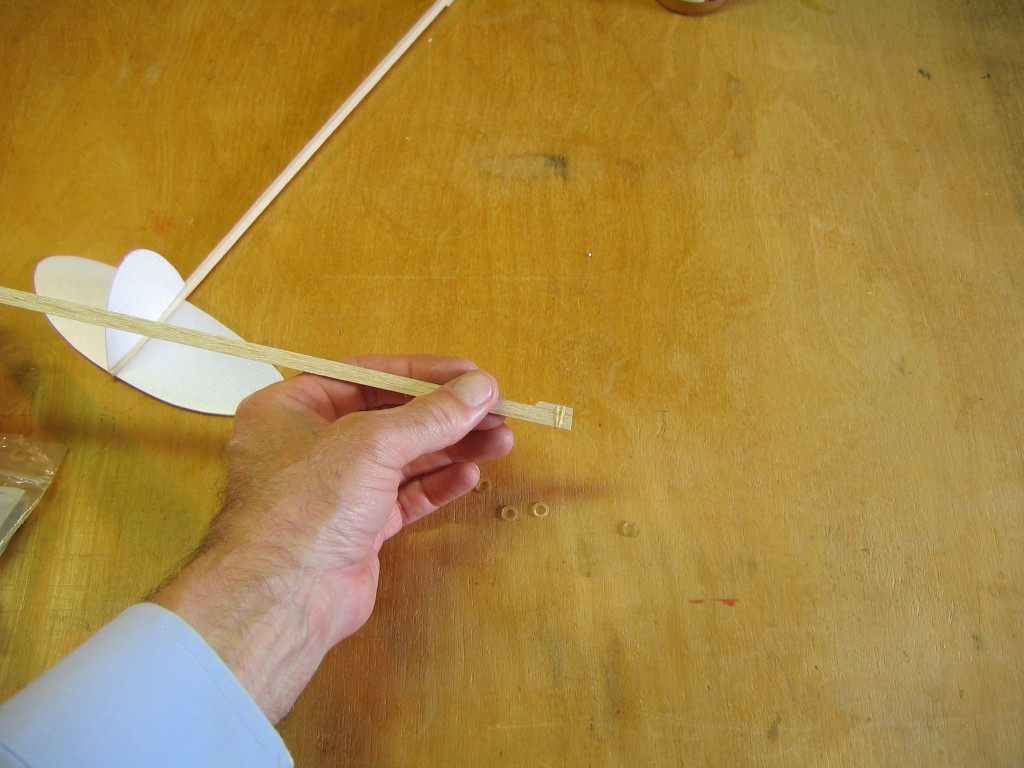
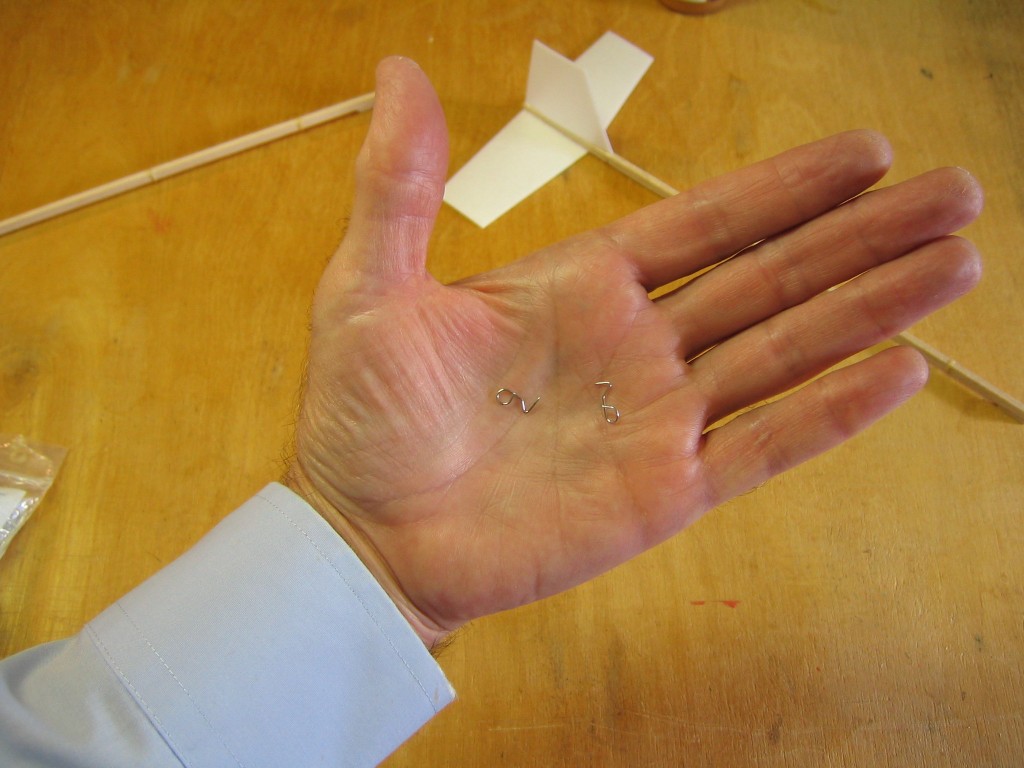
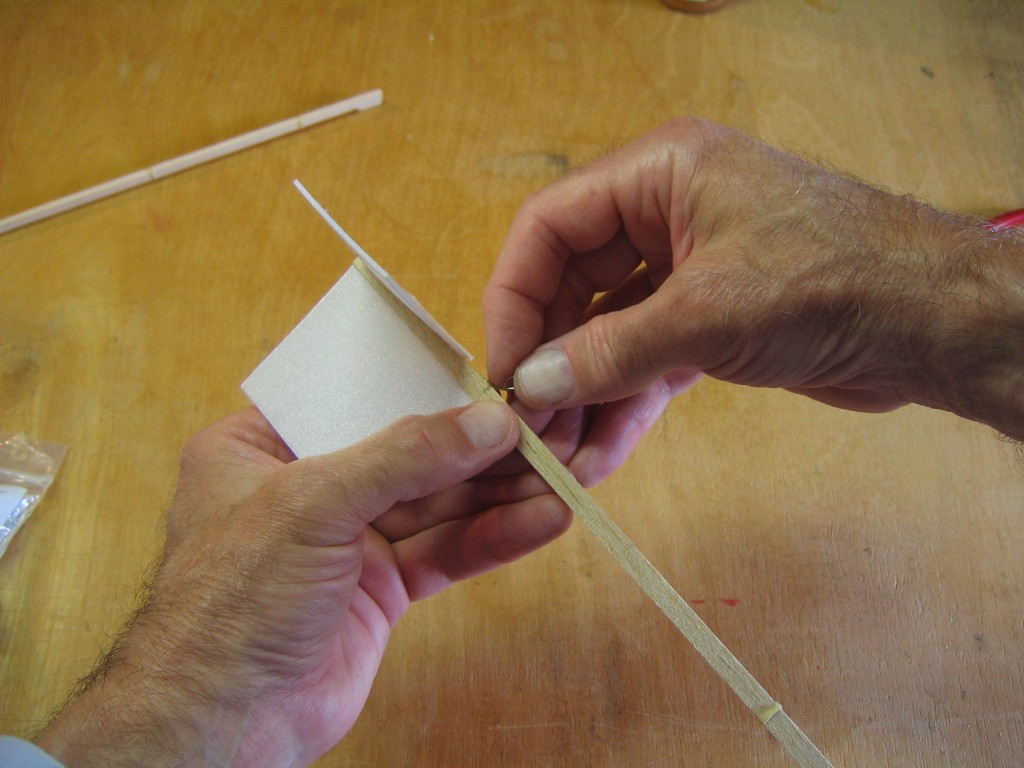
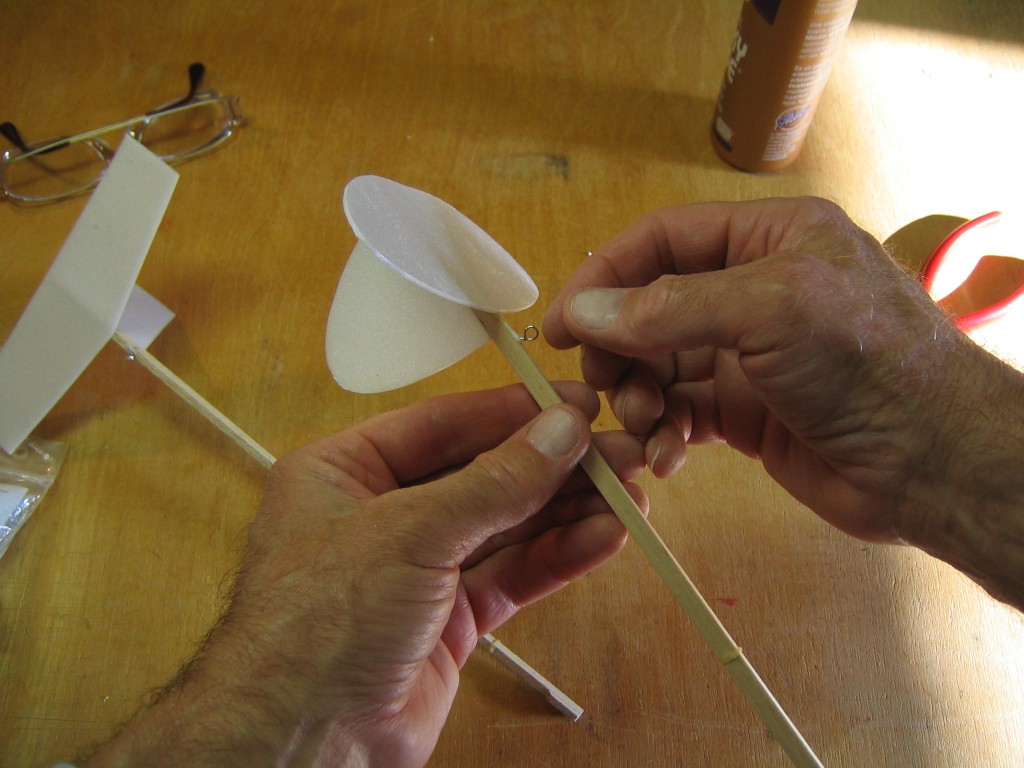
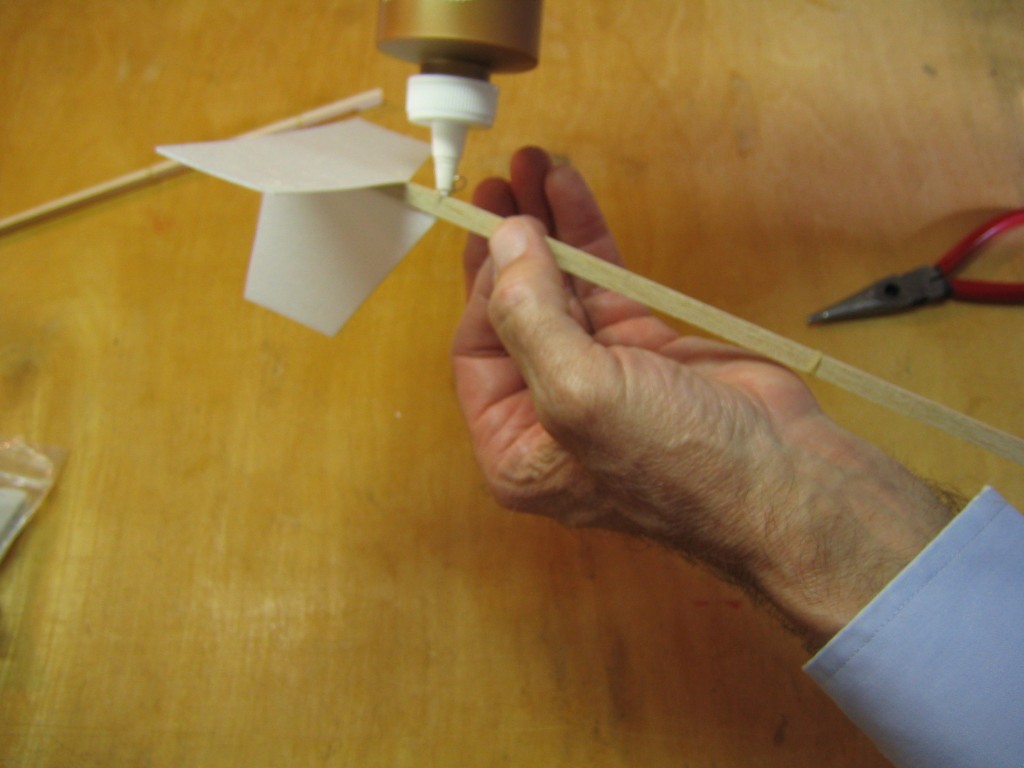
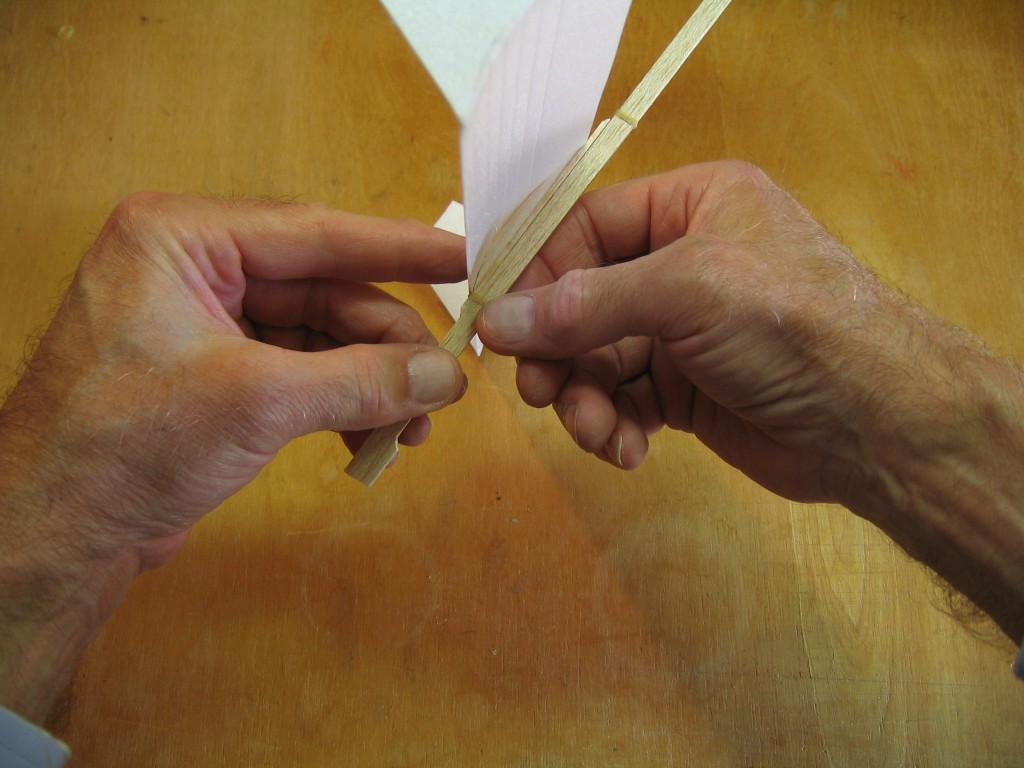
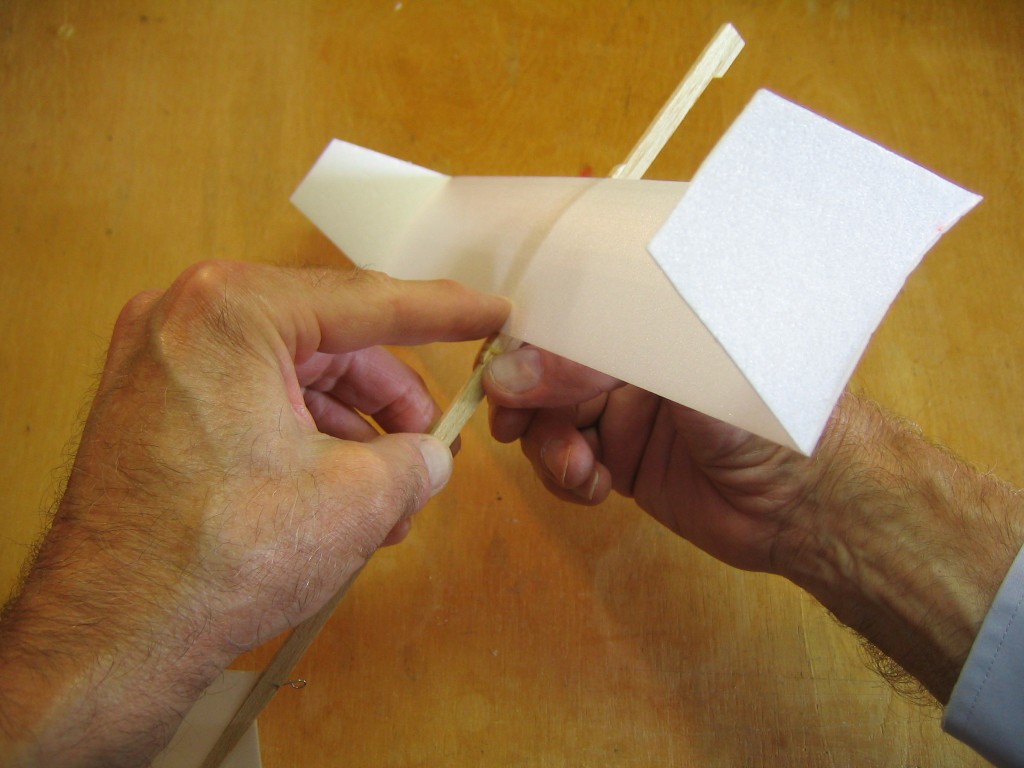
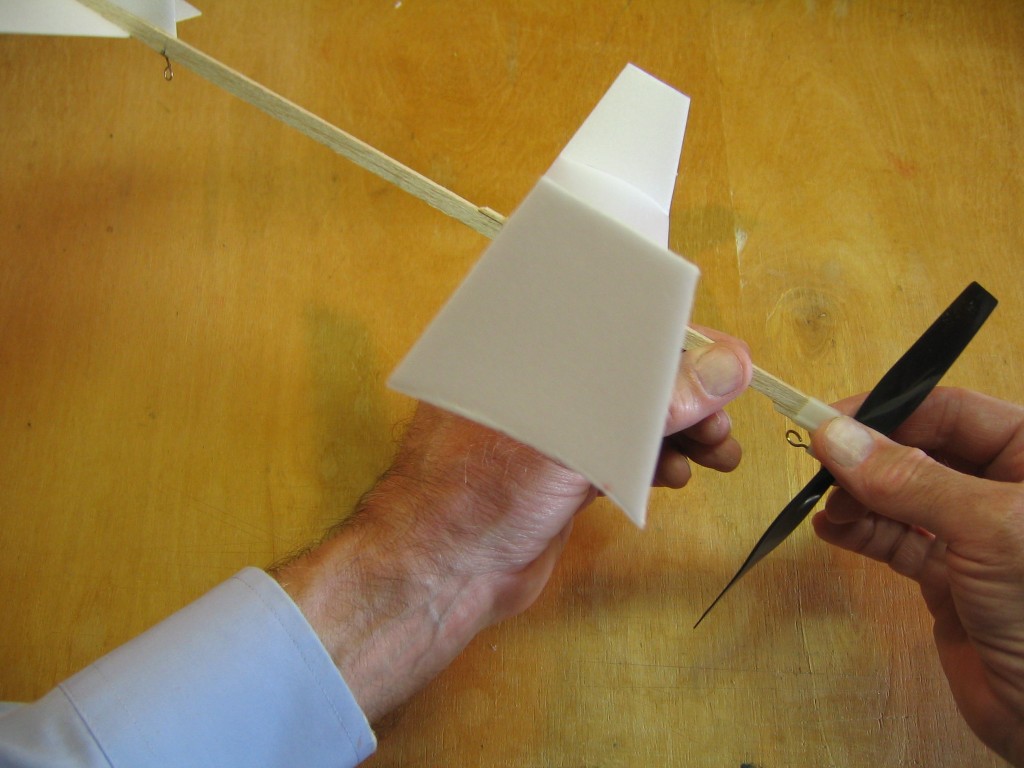
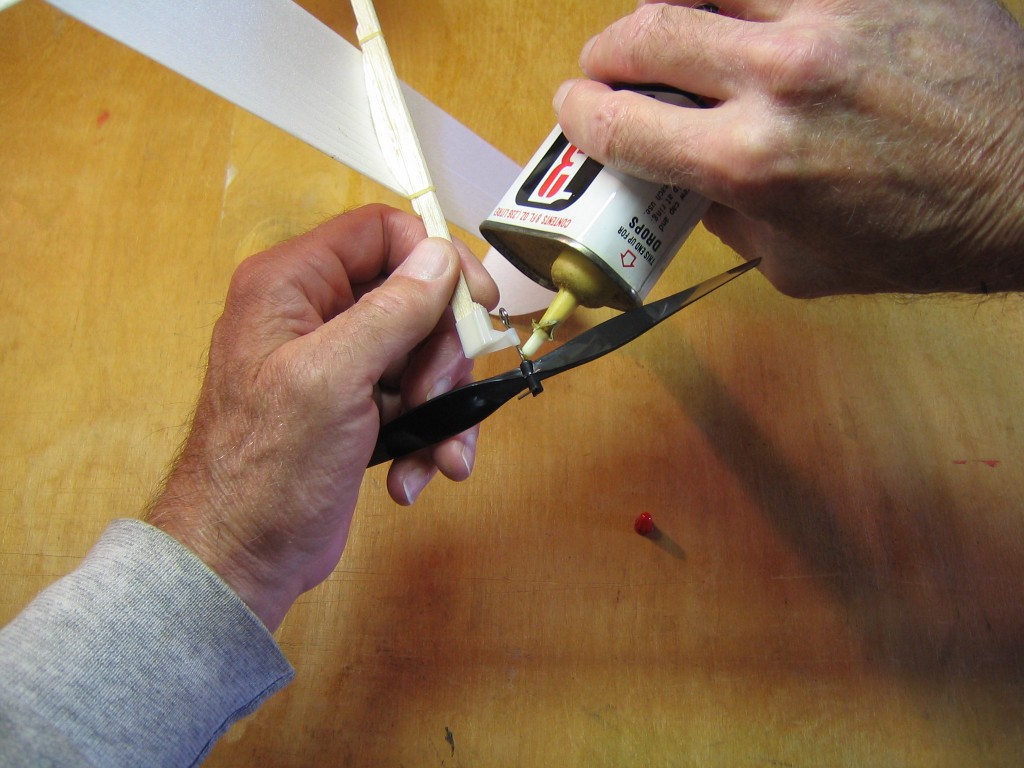
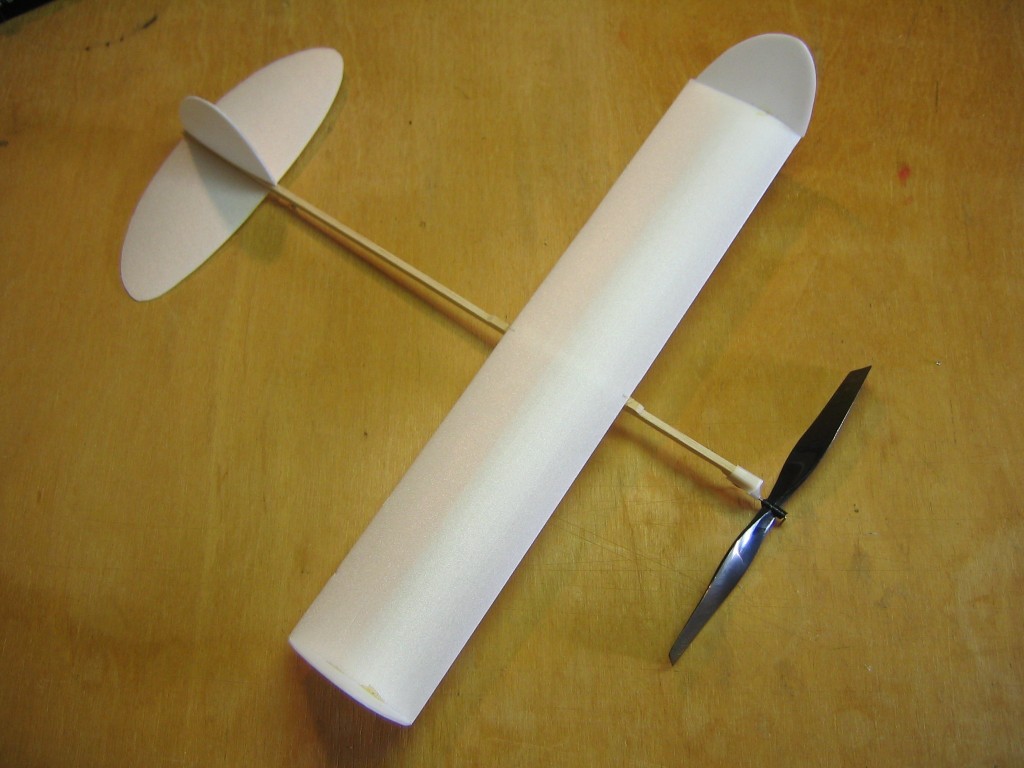
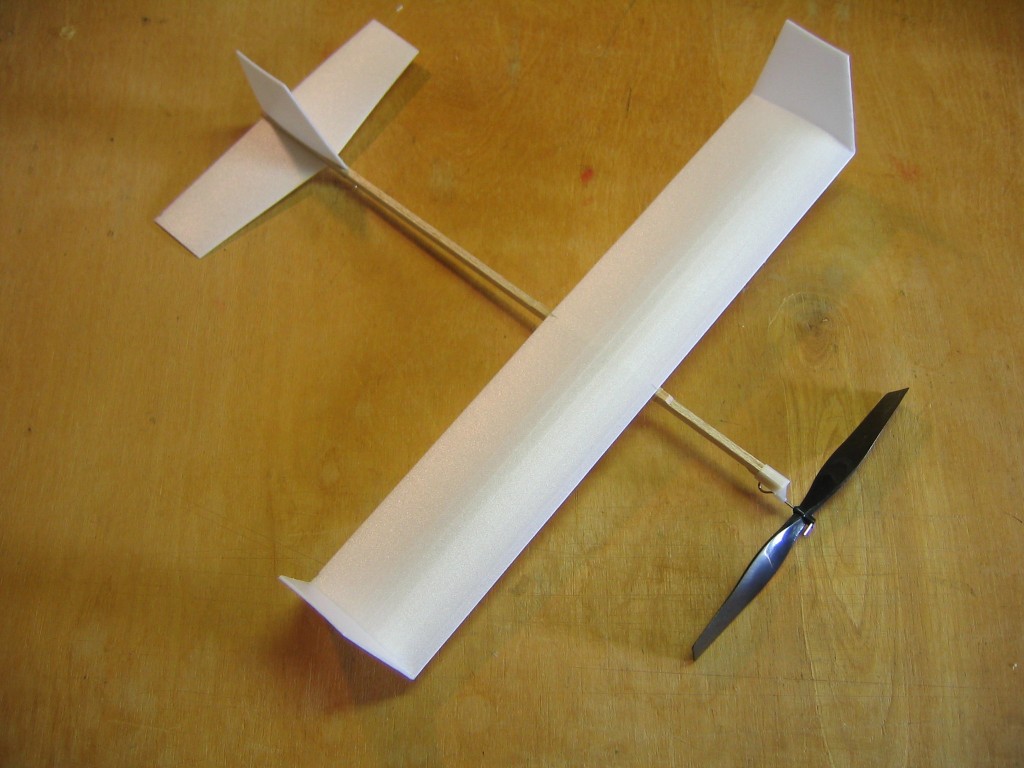
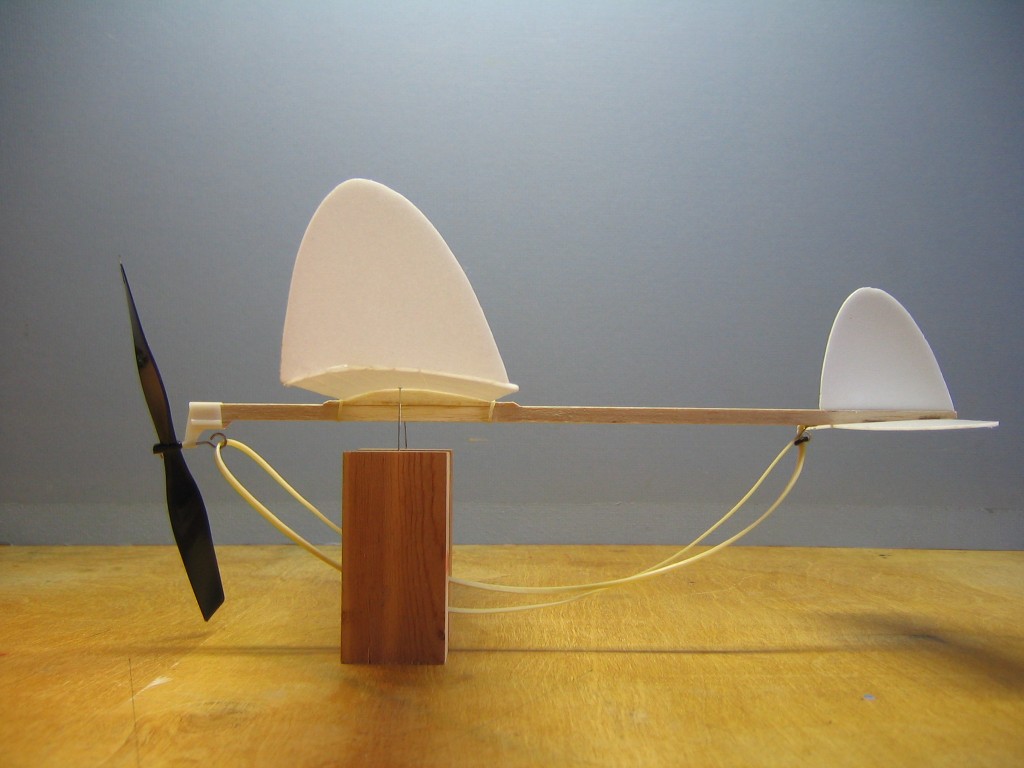
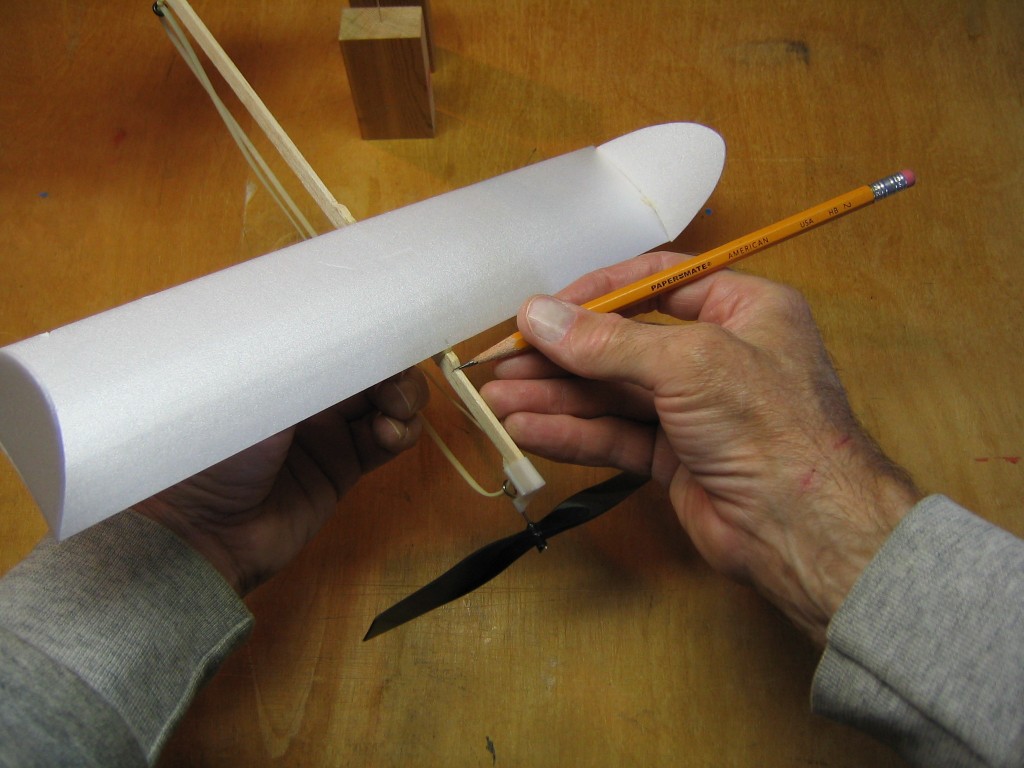
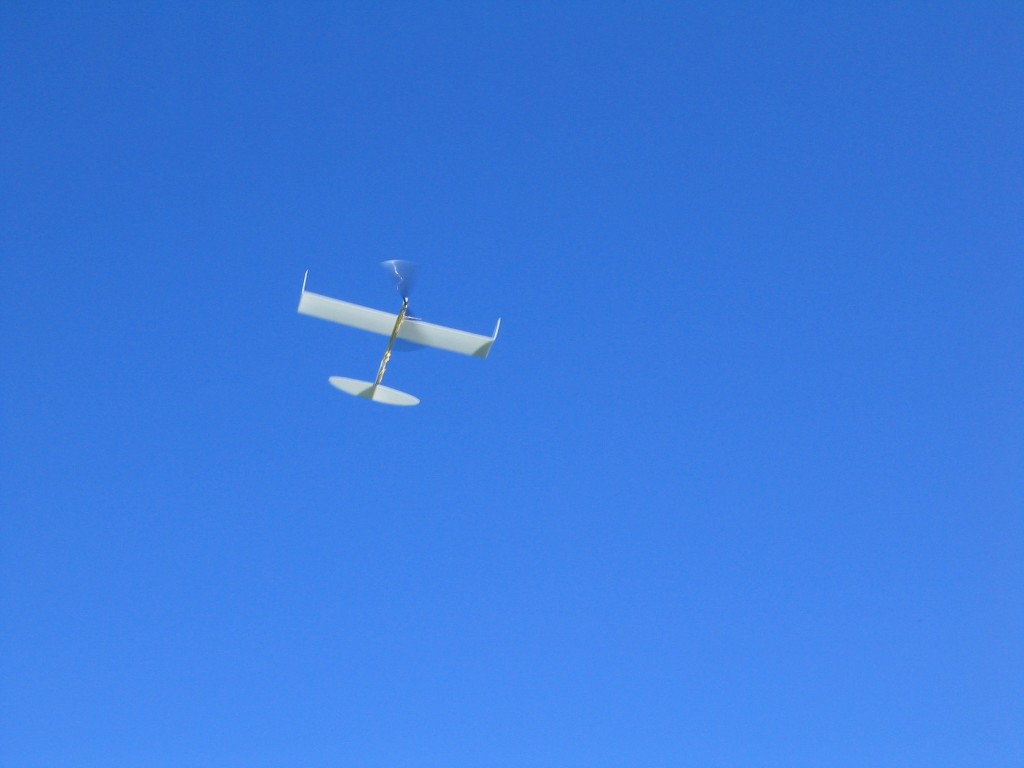
Hi there!
Your instructions and pictures are amazing and so detailed! this glider looks really fun to build. Do you by an chance sell foam squirrel kits?
I’d love to put some foam kits together. Send me an email at darcy@inventorArtist.com.
Nice instructions, couple thoughts, FWIW, I do a wrap of the rear hook with a few turns of thread, then glue – may be belt and suspenders but i don’t trust just glue.
Also, I check CG without the wing, marks it and then put the wing on with it in what should be the correct position, IMHO easier and gets it close to correct “trim”
Neil
I have occasionally had a rear hook pull loose. Wrapping and gluing thread around the hook and stick will pretty much eliminate that. Using a lot of glue is important in either case.
I added pictures showing the balancing of the plane. I balance the AMA Cub the way you describe – mark the CG of the fuselage assembly and place it under the midpoint of the wing. That can be done because the CG of the wing is also at the midpoint.
This was the first foam Squirrel I had built. I know I want this wing fly with the CG at 40% and I didn’t know how the CGs of the wing and fuselage assembly would relate to the final CG, so I did it this way. It is fairly easy to do. It was a good choice; the plane flew fine with this trim.